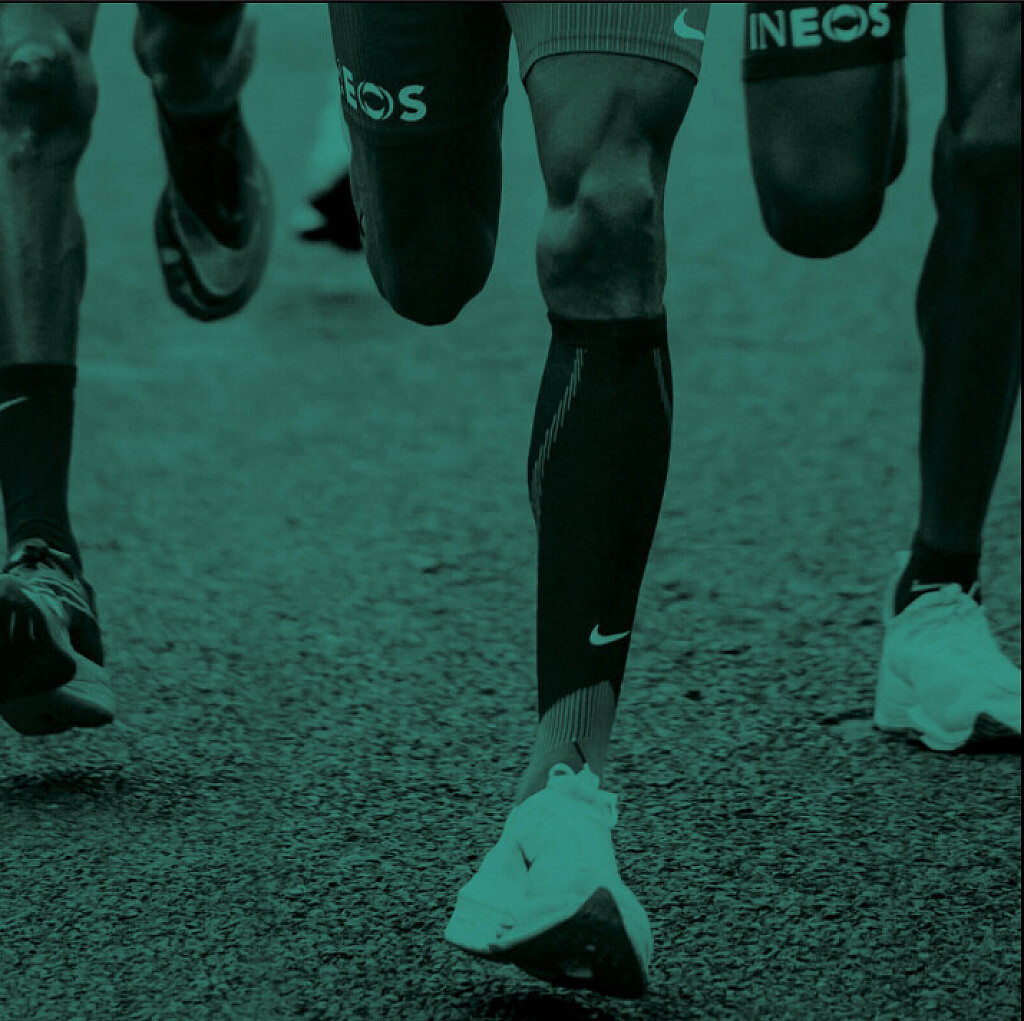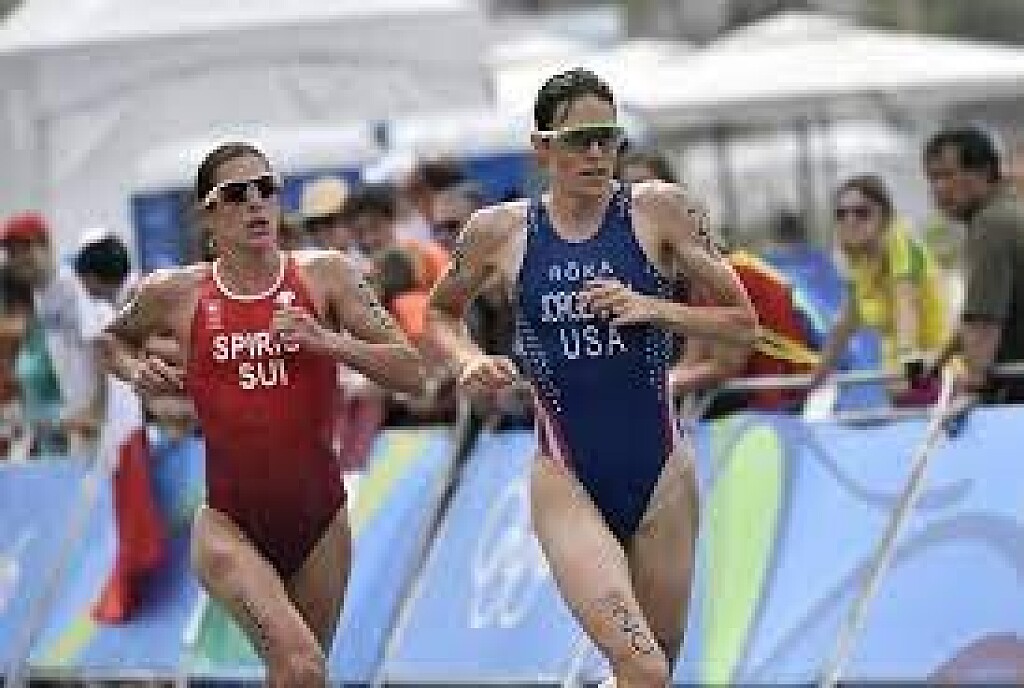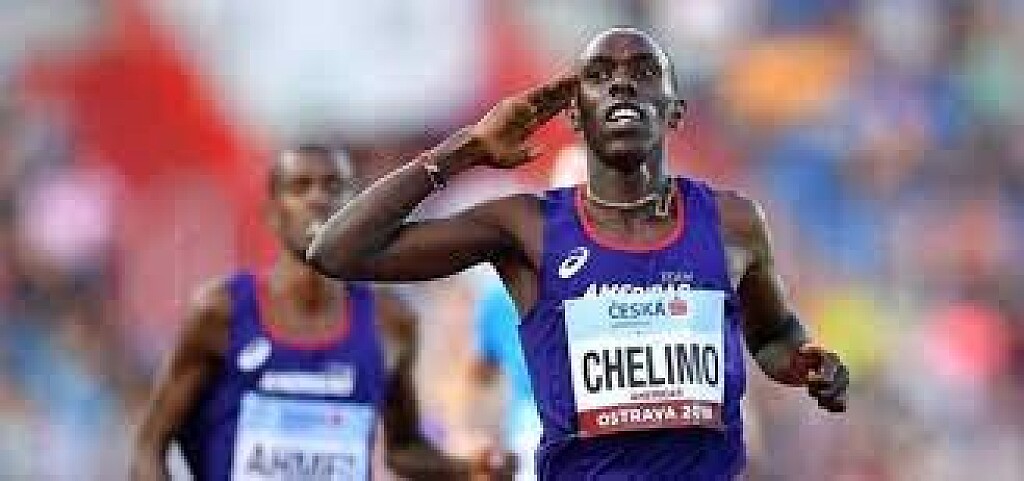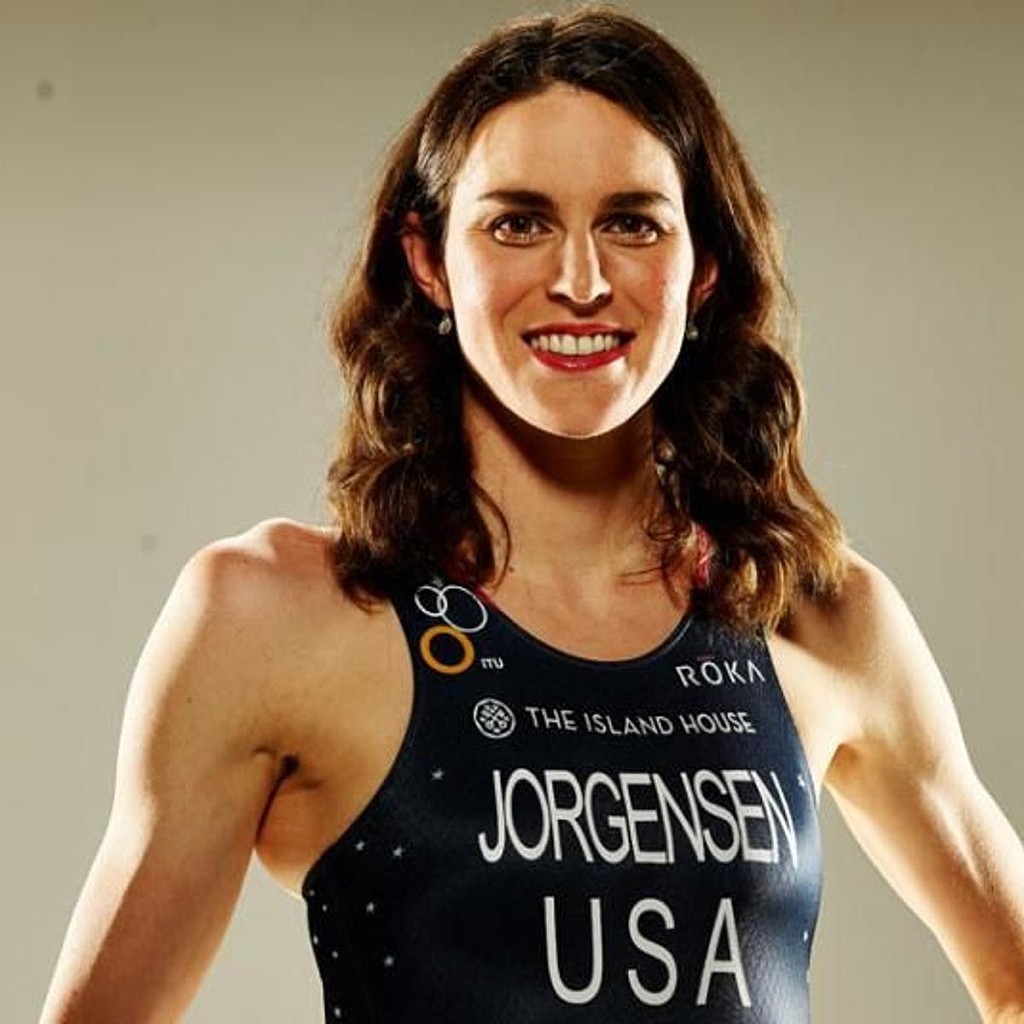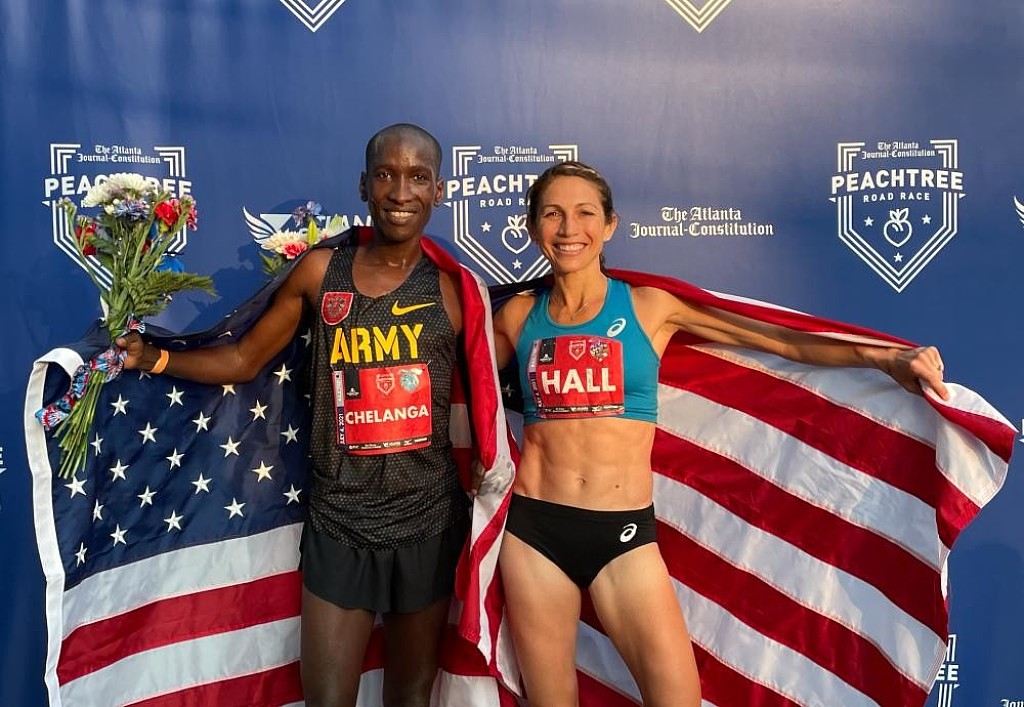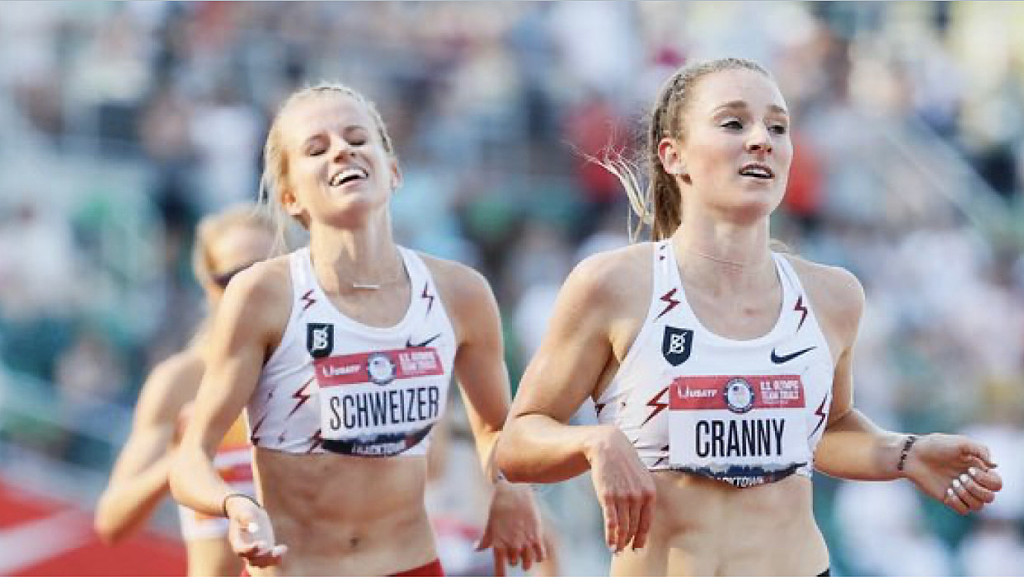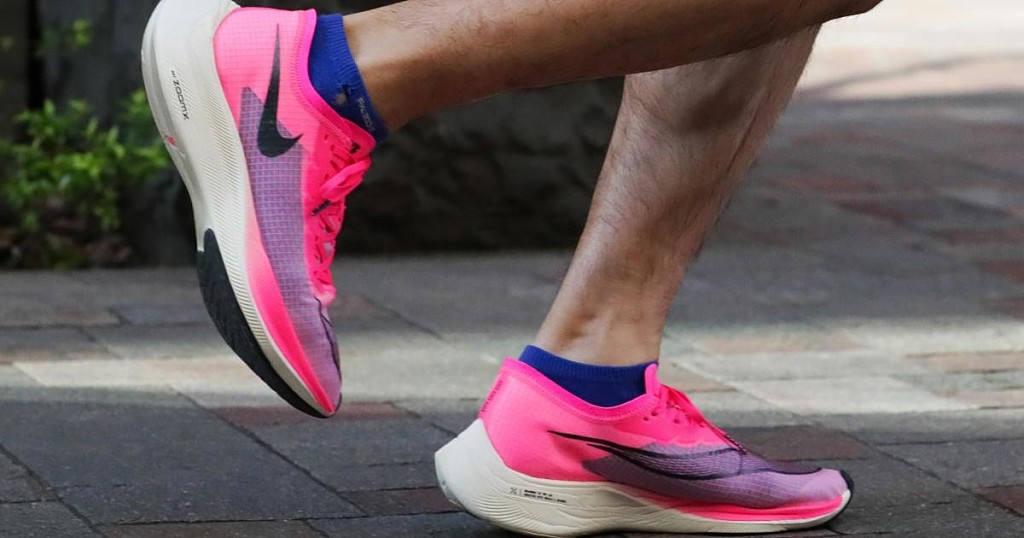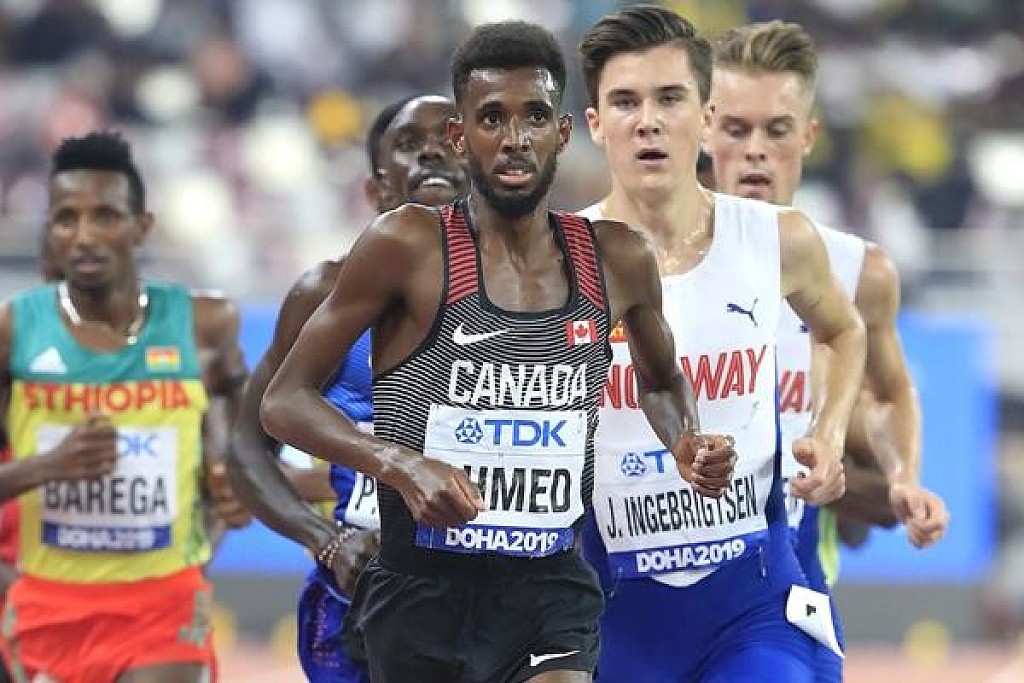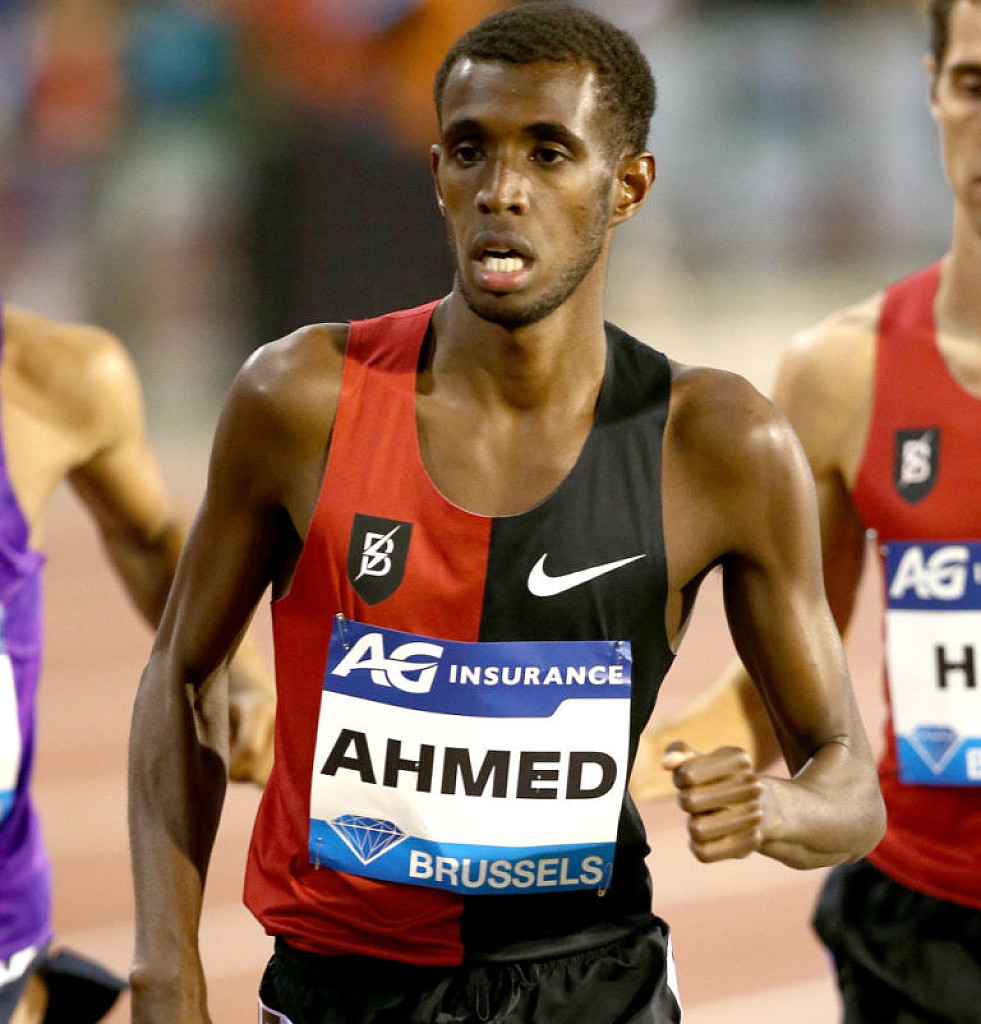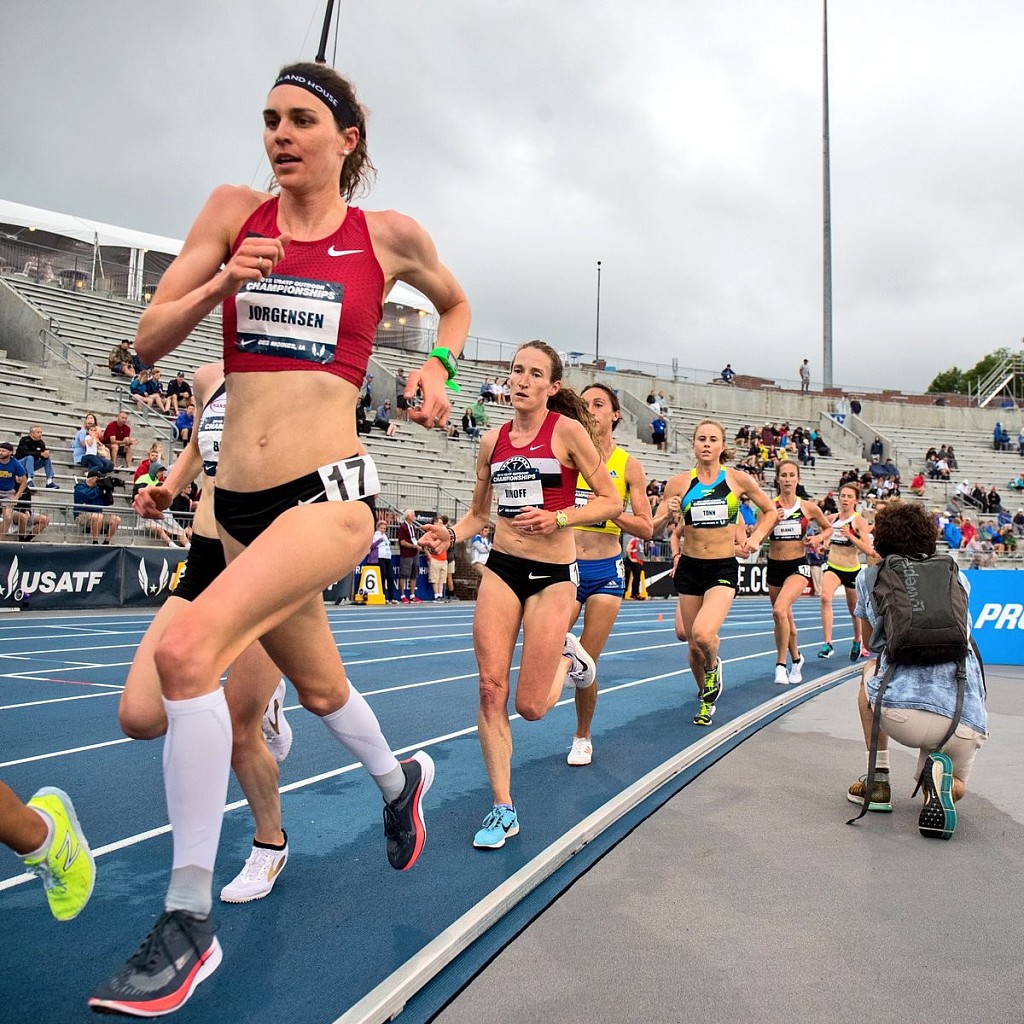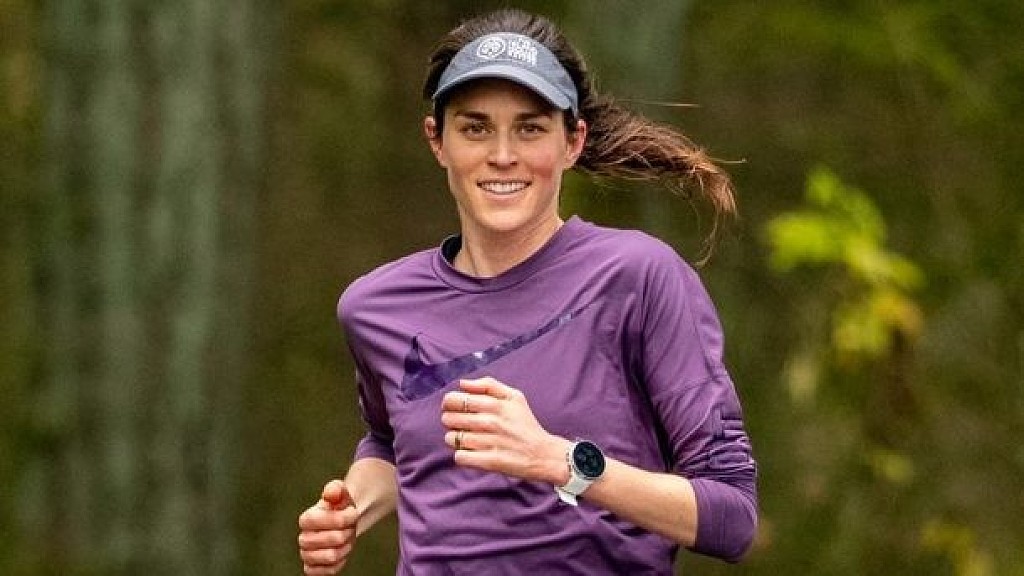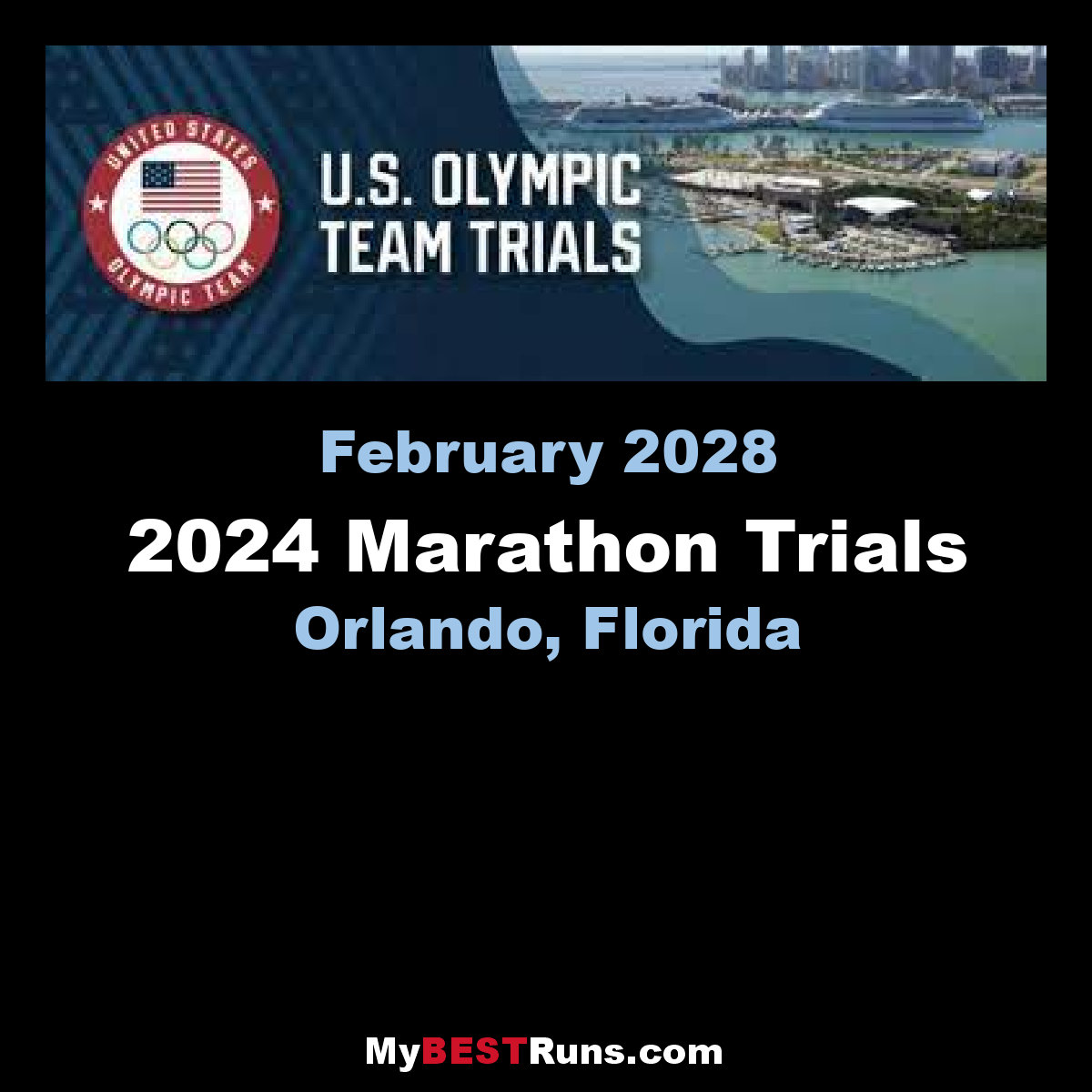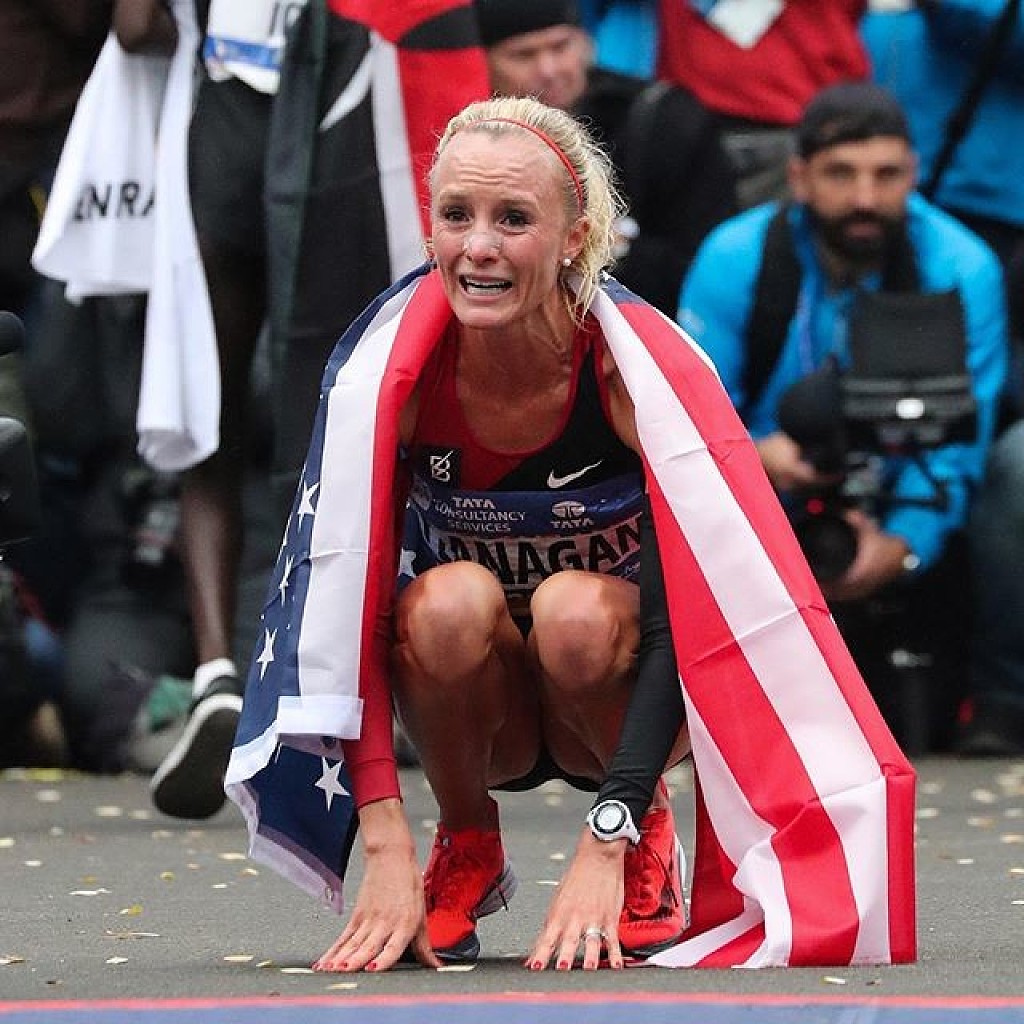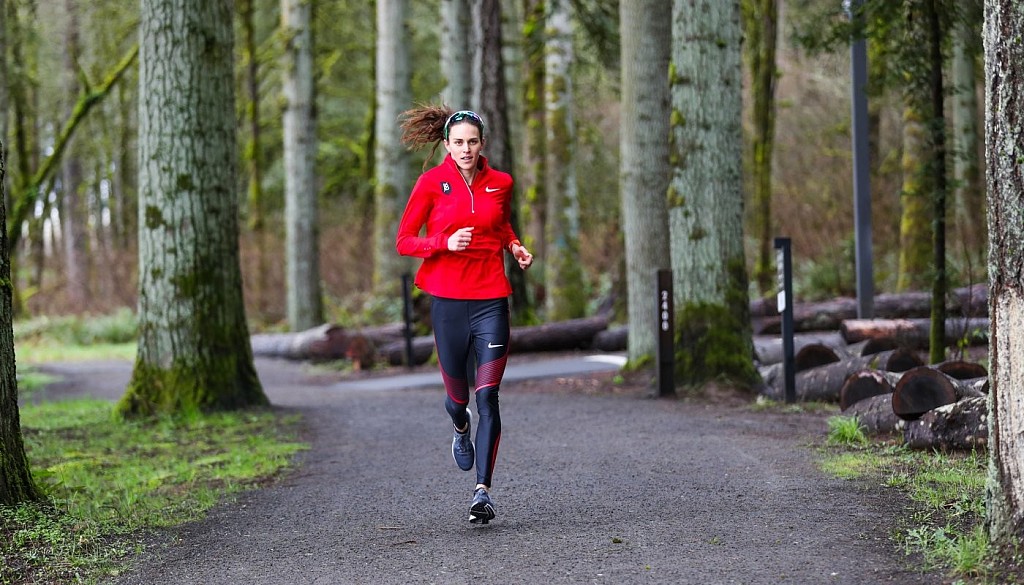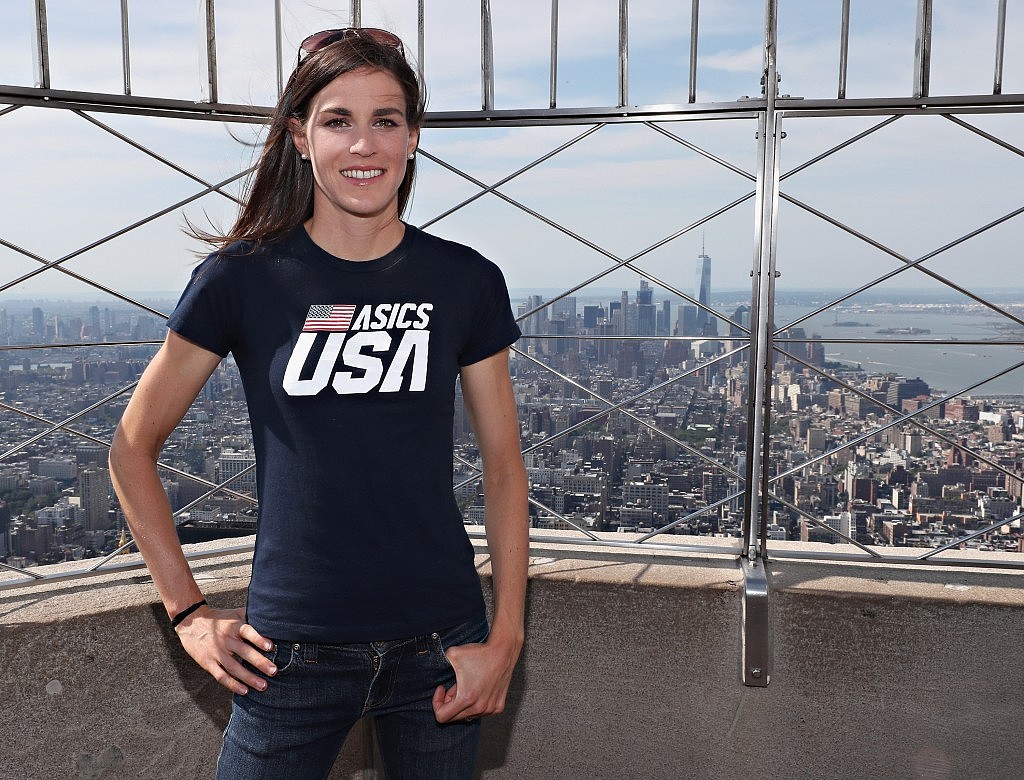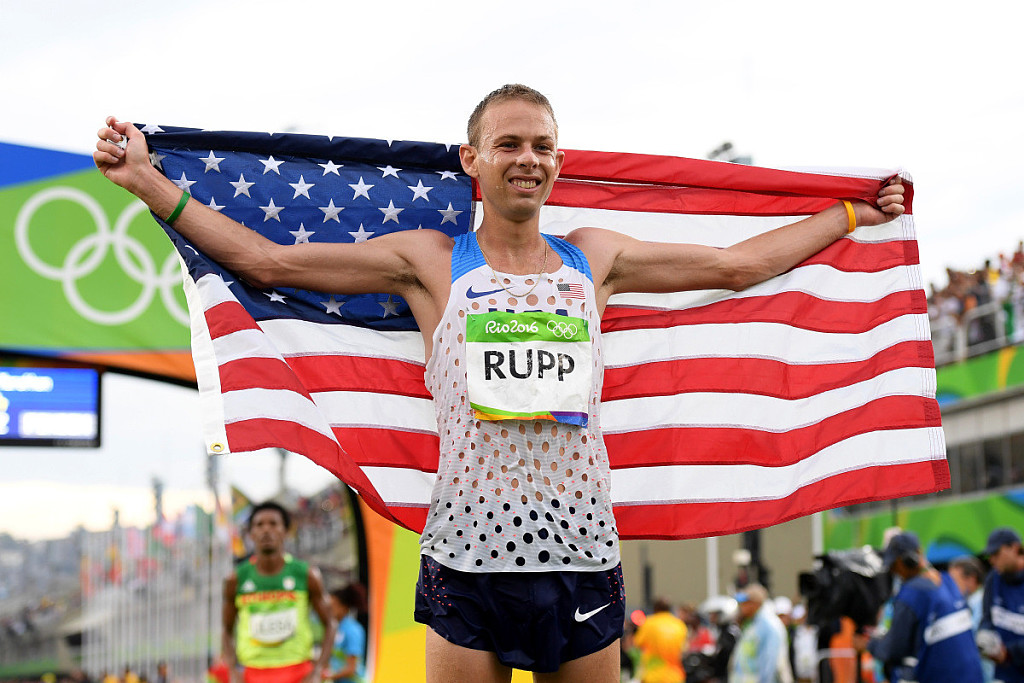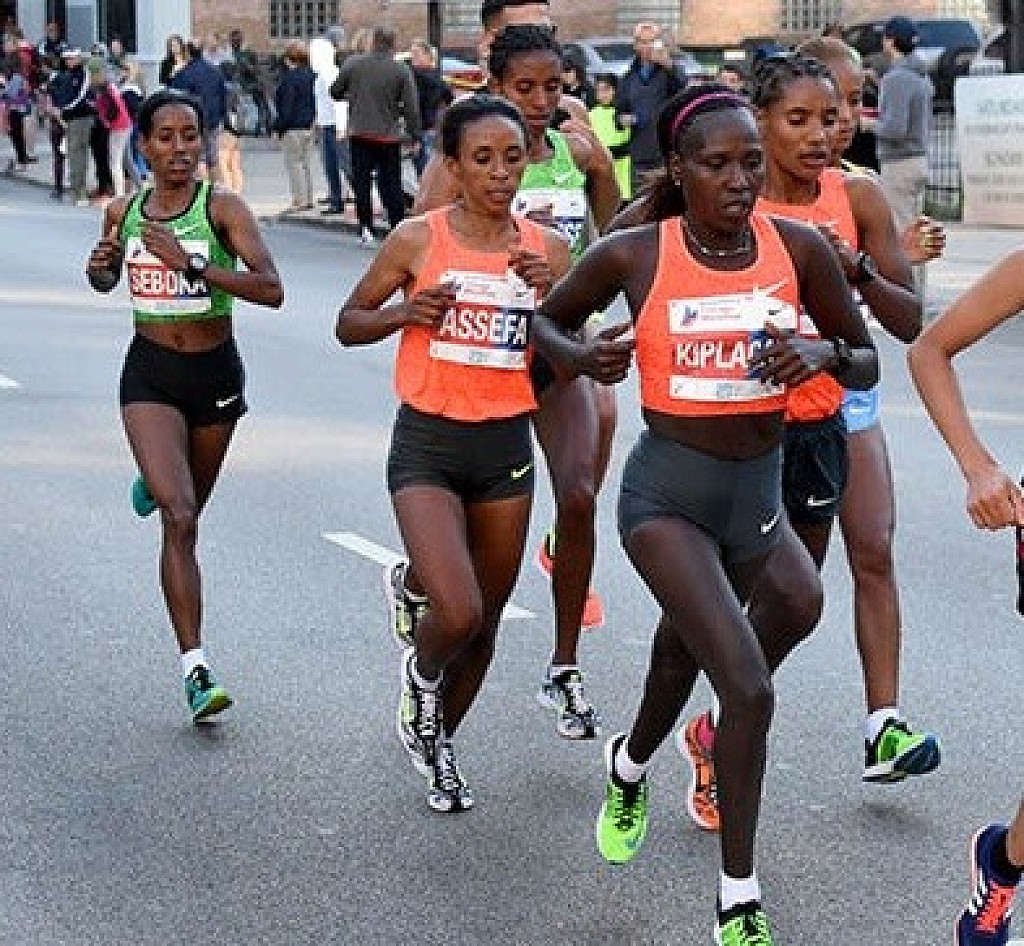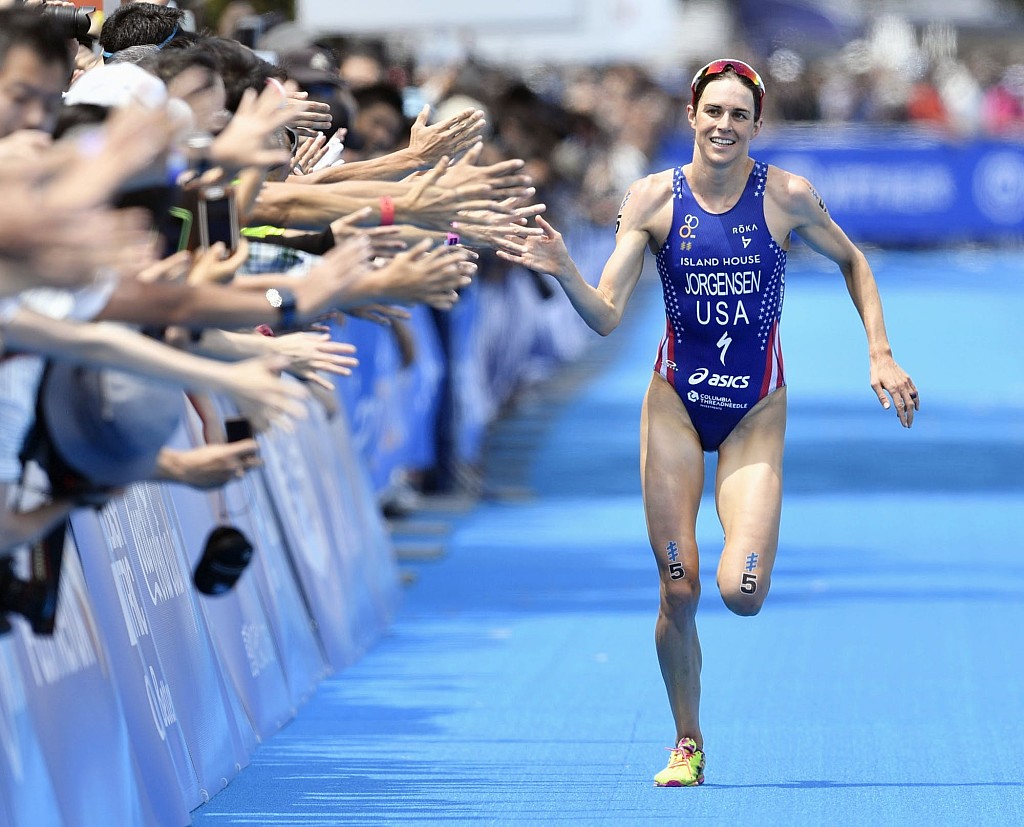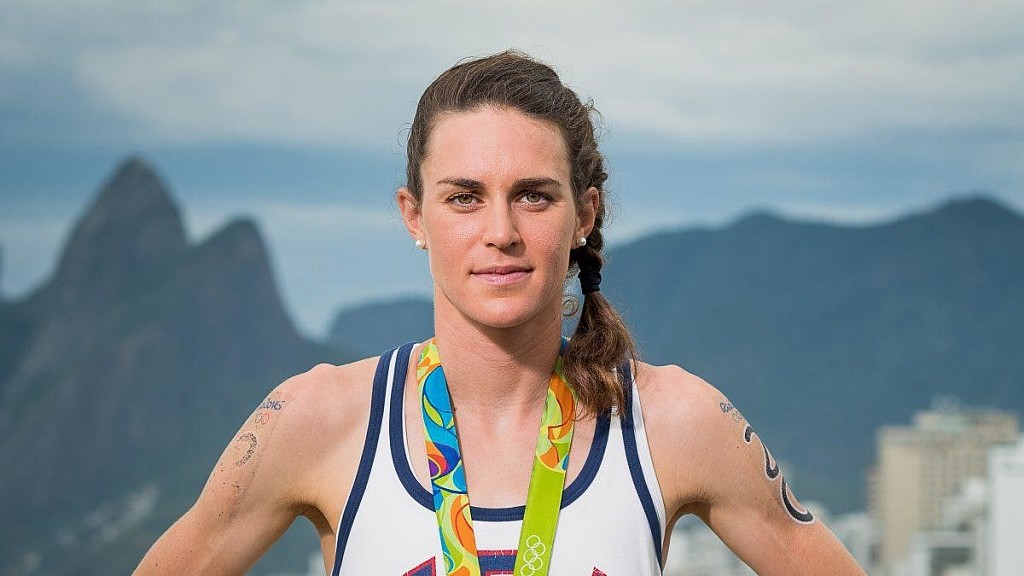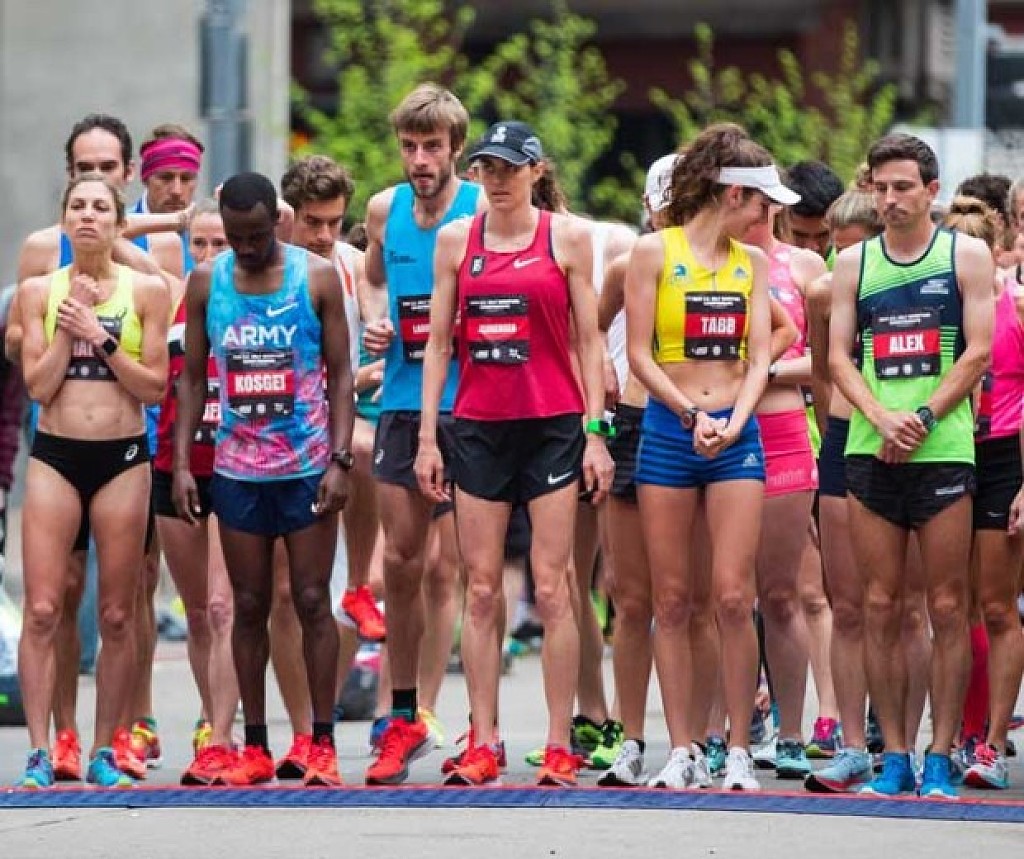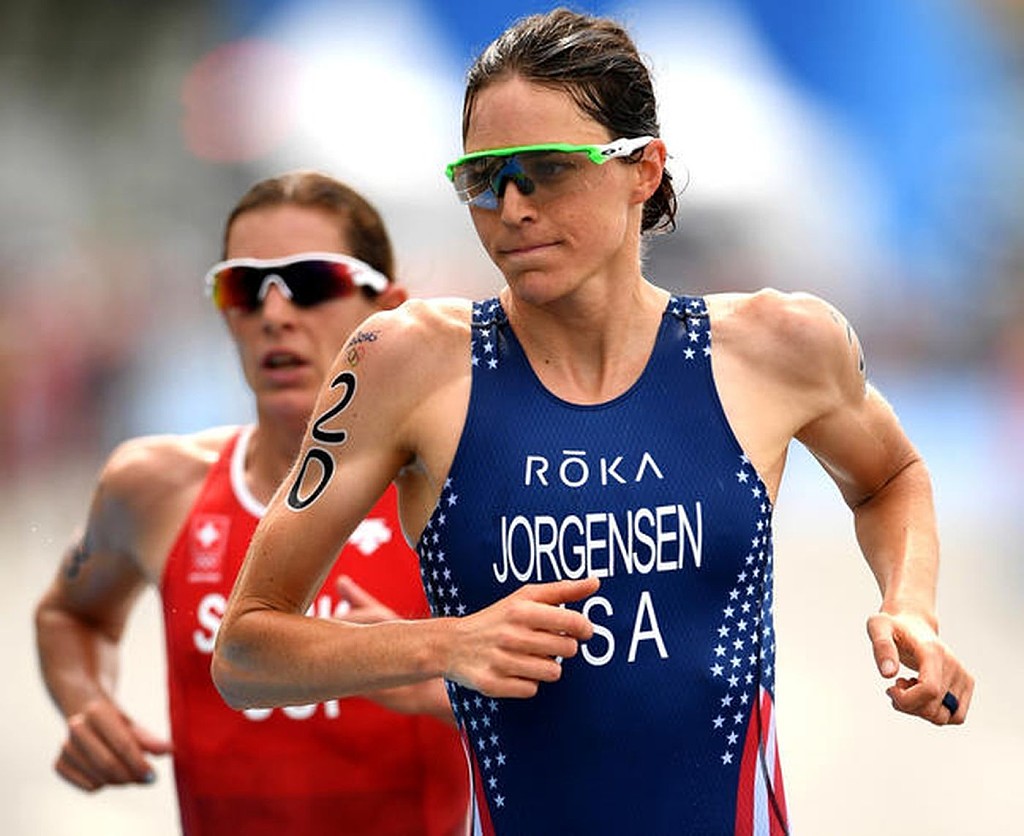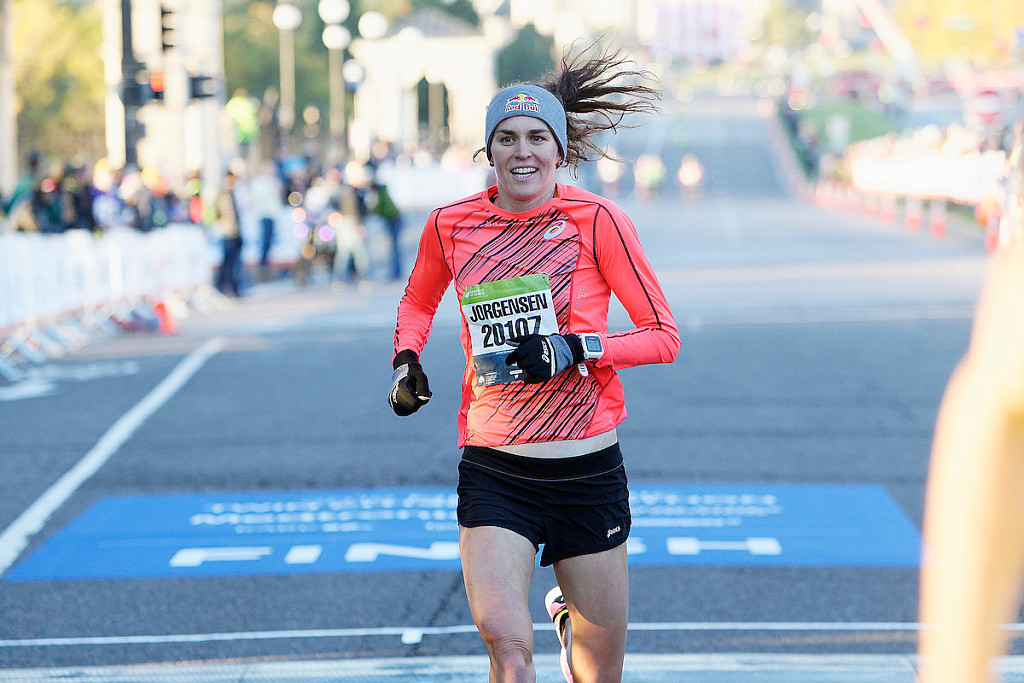Running News Daily
Running News Daily is edited by Bob Anderson. Send your news items to bob@mybestruns.com Advertising opportunities available. Train the Kenyan Way at KATA Kenya and Portugal owned and operated by Bob Anderson. Be sure to catch our movie A Long Run the movie KATA Running Camps and KATA Potato Farms - 31 now open in Kenya! https://kata.ke/
Index to Daily Posts · Sign Up For Updates · Run The World Feed
Articles tagged #Gwen Jorgensen
Today's Running News
Five Lessons from the Marathon Goat and his team
THE MOST REMARKABLE aspect of the fastest marathoner in history is how unremarkable—and how accessible—his training is. Eliud Kipchoge has the best resources in the world at his disposal, but rather than relying on treadmills that cost more than a Lexus or recovery devices worthy of NASA missions, he follows simple training tenets that maximize how he recovers, what he eats, his mindset, and the conditioning he does after his runs.
1. SLEEP LIKE YOUR RUN DEPENDS ON IT
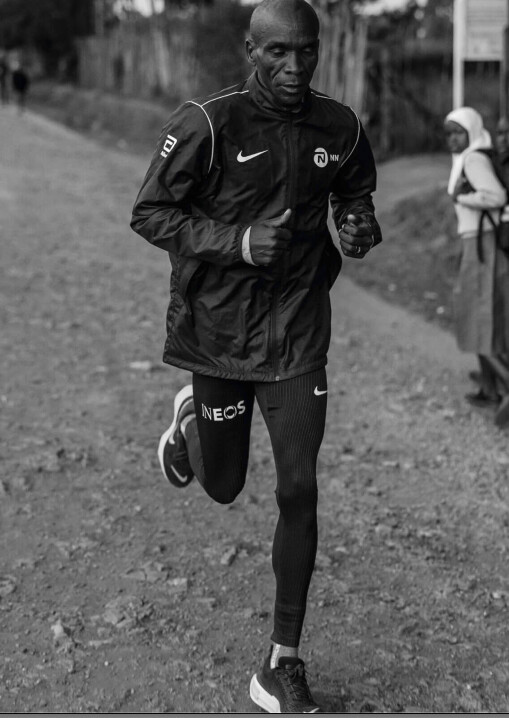
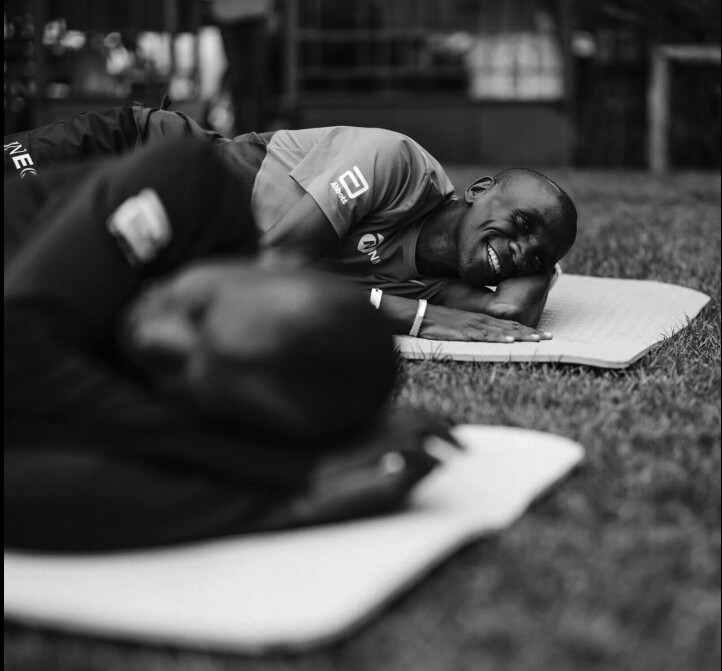
ELIUD KIPCHOGE SLEEPS up to 9 hours at night, often also taking an hour-long midday nap. Most of us don’t have the time or the 120-mile weekly workload to clock that much shut-eye, but we can still benefit from Kipchoge’s sleep hygiene cues.
At least 30 minutes before bed, he turns off or puts down all electronics. The habit reduces his exposure to blue light, known to delay the release of melatonin, leading to a decrease in sleepiness, says Kannan Ramar, MD, past president of the American Academy of Sleep Medicine. Then, instead of scrolling through social media (he prefers Facebook), Kipchoge winds down by reading at least two chapters of a book.
“If I have enough sleep, my body and my mind are free of stress and ready to go with the programs,” says Kipchoge.
While you’re asleep, your body is doing more than resting. Crucially, your pituitary gland releases growth hormone, which helps your muscles repair and grow, says Ramar.
Most runners don’t need a nap if they consistently get the recommended 7 to 9 hours, Ramar says. But when you don’t hit that target, naps can help counter short-term sleep loss and provide an energy boost for a late-day run, Ramar adds. He suggests a 20-minute doze between noon and 3 p.m. to relieve fatigue. Napping longer than 20 minutes can leave you feeling groggy due to entering a deep-sleep state, Ramar says.
2. REVIVE SORE MUSCLES WITH AN ICE BATH
TWICE A WEEK, Kipchoge takes a 10-minute plunge in his camp’s ice baths to aid his postrun recovery. It may not be pleasant, but studies find that cold water immersion (CWI) therapy like Kipchoge’s ice bath is effective. “Most research shows that over 48 hours, athletes have reported an improvement in DOMS [delayed onset muscle soreness] and sometimes corresponding improvements in strength and/or flexibility,” says Rebecca Stearns, PhD, a professor of kinesiology at the University of Connecticut.
Cold water reduces the body’s temperature, which narrows the blood vessels. This flushes metabolic waste from inflammation out of muscles to speed recovery, says Stearns. Water temperature between 50 and 59 degrees Fahrenheit for 10 to 15 minutes is cold enough to produce results, she adds.
You can set up an ice bath at home by filling a tub halfway with cold water. Then, depending on your tap temperature, add one to three 5-pound bags of ice. Stearns suggests trying CWI once or twice a week and checking with your physician to make sure you don’t have any contraindications for doing ice baths.
“It’s very intense. It’s not for everybody,” Kipchoge says. “You need to learn to relax and learn to absorb pain.”
3. UPGRADE YOUR DIET WITH PROTEIN
KIPCHOGE HAS ALWAYS maintained a highcarb diet, but after running 2:00:25 in Nike’s 2017 Breaking2 project, he began working with exercise biochemist Armand Bettonviel to improve his nutrition and further push his performance. Bettonviel, who develops nutrition plans for elite athletes, sought to up Kipchoge’s protein intake to aid his recovery as well as help to build and maintain his lean muscle.
“I’ve noticed a difference since I started to be serious about nutrition,” Kipchoge says. “Recovery is very fast, I have a lot of energy.”
While Kipchoge’s exact protein intake is confidential, Bettonviel suggests runners aim for 1.5 to 2 grams of protein per kilogram of bodyweight. For a 150-pound runner, that’s 102 to 136 grams.
Kipchoge’s meals feature Kenyan staples like ugali (a cornmeal porridge), potatoes, rice, chapati (a wheat flatbread), managu (an iron-rich leafy green), beans, whole-fat milk, eggs, chicken, and beef. Meat is only served about half the week, so to hit his protein goal Kipchoge drinks mala, a local sour milk, says Bettonviel. Every 6 ounces has about 7 grams of protein, making it comparable to kefir found in most stateside dairy aisles.
Bettonviel also introduced a high-protein porridge to the camp menu (Kipchoge eats it with fruit after training) made with whey protein and teff, an ancient grain that offers 10 grams of protein per cooked cup. You can DIY by mixing a half scoop of protein powder with whole-grain teff—stocked at many grocery stores and sold on Amazon—and cook it similarly to oatmeal. Alternatively, Kodiak Cakes makes oatmeal with whey protein and 12 grams of protein per serving.
4. MEDITATE TO BUILD MENTAL STRENGTH
KIPCHOGE IS AN especially mindful runner, says his coach Patrick Sang. While training and racing, he focuses on his breath and his movements, and aims to minimize outside distractions. It’s a skill that helps him embrace the pain and challenges of a marathon.
Mindfulness—a practice of focusing your awareness on the moment, with a kind and curious attention in a nonjudgmental attitude—can benefit any runner, says Corrie Falcon, director of mindfulness-based training for athletes at the University of San Diego Center for Mindfulness. Resting your attention on elements of a present moment, like your breath, heartbeat, or even a drip of sweat, can prevent you from getting caught in an inner dialogue mid-training or competition that may unravel your focus.
“In moments of high stress before or during a race, mindfulness has been shown to reduce the production of stress hormones, reduce blood pressure and heart rate, improve emotional regulation, and promote relaxation in the body,” says Tara Zinnamon, PhD, a neuroscientist and meditation teacher.
Kipchoge credits his focused, spartan lifestyle for developing mindfulness, but it can also be cultivated through a consistent mindfulness routine. Even just 12 minutes of guided meditation five days a week for one month can be effective, says Amishi Jha, PhD, a professor of psychology at the University of Miami.
If guided meditation seems outside your comfort zone, Falcon recommends a strategy you can try while running. She describes it as a “sense practice.” Run in silence. For two minutes, focus on what you see, then focus on sound, followed by what sensations you feel, and then smell. “And when you have a thought, label it ‘thought’ or ‘thinking’ and return to the present moment experience through the senses,” says Falcon.
5. BUILD BONUS ENDURANCE ON A BIKE
TO BOOST HIS training volume without increasing his risk of a running injury, Kipchoge rides a stationary bike for an hour twice a week after his runs.
Cycling is a concentric (shortening) muscle-contraction activity, which is easier for muscles to recover from, says Colorado-based coach Bobby McGee, who has worked with runners and triathletes (including Olympic gold medalist Gwen Jorgensen) for more than three decades. In running, the primary loading is eccentric (lengthening), which is more demanding and damaging.
“A one-hour endurance run is limited by leg fatigue, not heart and lung fatigue. A two-hour ride doubles the cardio conditioning but has minimal leg-muscle damage,” says McGee.
Kipchoge spins at an easy pace, which he says also helps reduce muscle soreness. “Cycling is a far more effective recovery modality than an easy run, especially for bigger runners with a slower cadence,” says McGee. He recommends cycling no more than twice weekly and for less than 20 percent of your overall training time.
Login to leave a comment
Gwen Jorgensen to make shock triathlon comeback ahead of Paris 2024
The 2016 Olympic champion Gwen Jorgensen has announced a surprise return to triathlon – with the Mixed Team Relay at the Paris Olympics in 2024 her primary target.
The American was a legend of the sport, becoming what was then the ITU World Triathlon Champion in both 2014 and 2015 in addition to her Olympic title, the USA’s first ever triathlon gold medal.
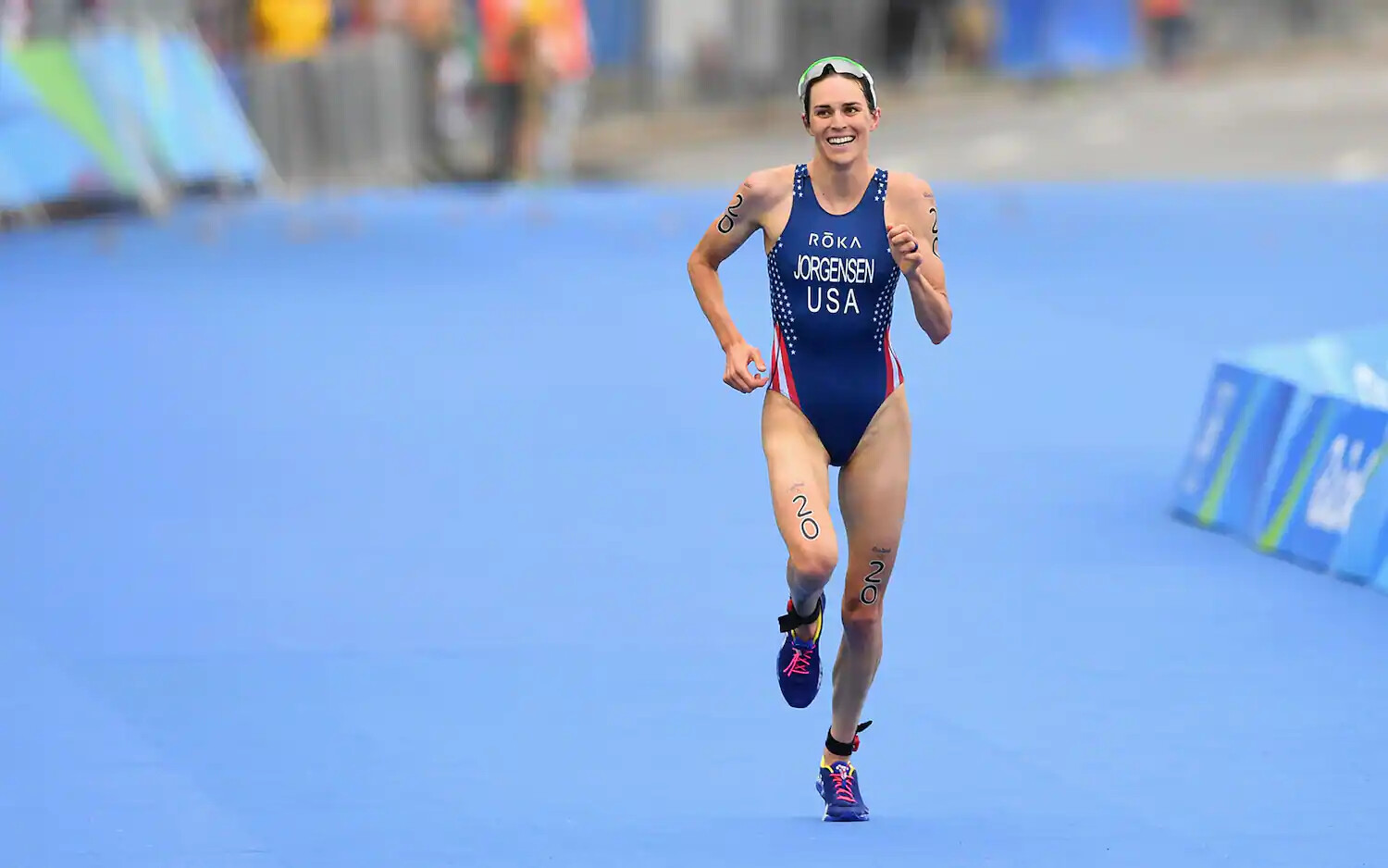
She announced her retirement late in 2017, with her focus then switching to running and trying to win an Olympic Marathon title in Tokyo but injuries hampered that and she recently gave birth to her second child, George, who is a younger brother to five-year-old Stanley.
Inspired – and inspiring
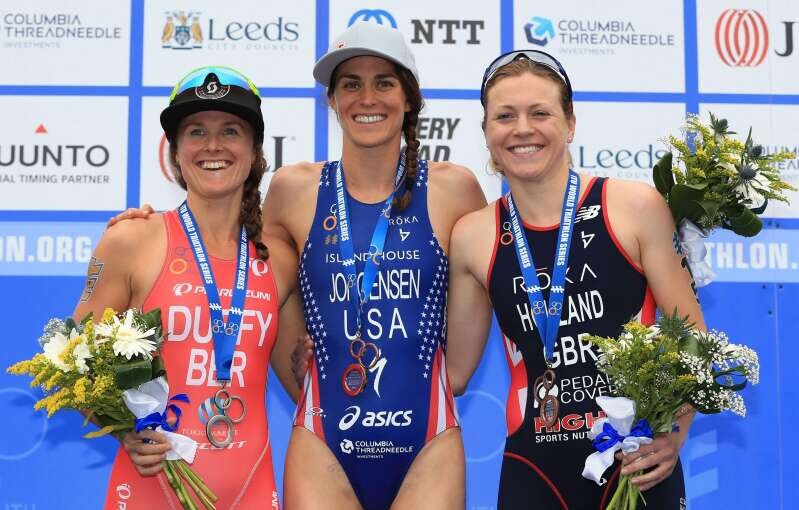
She revealed her shock comeback to swim / bike / run on her social media channels, posting on Instagram: “I am thrilled to announce my return to the blue carpet. I’m collaborating with my team to return to form and look forward to the work ahead as I invest in myself and USA Triathlon.
“I am inspired by the mixed-team relay’s silver medal in Tokyo and aspire to contribute to that team in 2024. I believe team USA can be one step higher in Paris!
“As a mom of two and long-time supporter of USA Triathlon, I strive to set an example that motivates and inspires my family, moms everywhere, and team USA.”
And World Triathlon responded immediately to the news, saying: “We are thrilled to welcome you back on the blue carpet Gwen Jorgensen.”
Going into more detail on a YouTube video, embedded below, she added: “I’m coming back to World Triathlon – what was then ITU – but what I’m really excited about is the Mixed Team Relay, which wasn’t an event at the 2016 Olympics.
“That is what is really motivating me to come back to triathlon. The Olympics are coming up really quick and the timeline is super short.
“There is a qualifying event in August 2023 and for me to even get on that startline is going to be super difficult so I’m probably going to be forced to race earlier than I’d like to but… I just gotta dive in and get started.”
The USA can qualify three women for the Olympics, with the likes of Taylor Knibb and Taylor Spivey two of the leading current contenders – and Jorgensen will have to race the individual to be in contention for the Mixed Team Relay (which features two women and two men).
‘Having kids doesn’t mean your career is over’
She speaks candidly about the practicalities of looking after her two children while fitting in her training and explained that an au pair will help with that process.
“I always thought I couldn’t be a mum and an athlete and it was other women who actually inspired me and let me know that I actually can do both.
“Nicola Spirig was probably the biggest motivator for me. She got silver at the 2016 Olympics having had a child. And then she had two more kids and came back and went to the Tokyo Olympics.
“She was a big motivator showing me that having kids doesn’t mean your career is over.”
There have been other inspiring examples too, highlighted by Chelsea Sodaro winning the IRONMAN World Championship at Kona this year, 18 months after giving birth to her first child.
by Jonathan Turner
3598
Login to leave a comment
National Champions and olympic medalists will Headline 2021 USATF 5K Championships at Abbott Dash to the Finish Line 5K
The 2021 Abbott Dash to the Finish Line 5K and USA Track & Field (USATF) 5K Championships on Saturday, November 6, will feature five Olympians and 28 athletes who competed at the 2020 U.S. Olympic Trials.
The event will take place in Midtown Manhattan the day prior to the TCS New York City Marathon and will be broadcast live on USATF.TV. Abbott will return as the title partner of the event which features a $60,000 prize purse – the largest of any 5K race in the world.
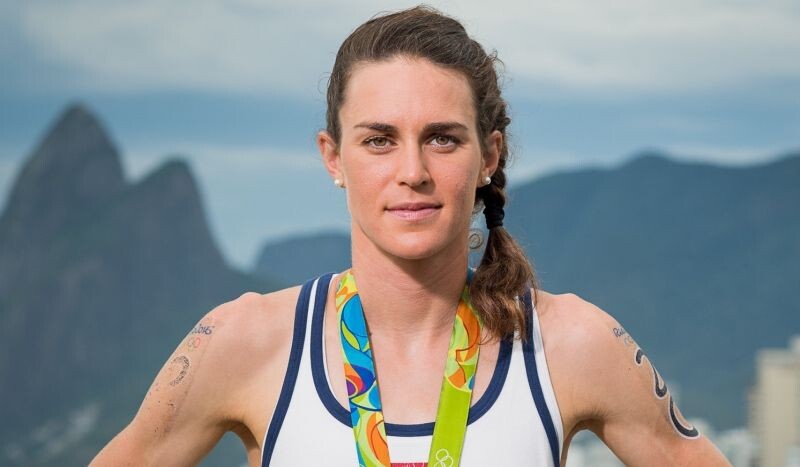
The men’s field will be led by two-time Olympic medalist and eight-time national champion Paul Chelimo and Rio 2016 Olympic gold medalist and seven-time national champion Matthew Centrowitz. Chelimo, who won an Olympic 5,000-meter silver in 2016 and bronze in 2021, won the 2018 USATF 5K Championships in New York in a course-record time of 13:45. They will be challenged by 2021 national champions Eric Avila (mile), Sam Chelanga (10K), and Biya Simbassa (10 mile and 25K).
“I learned a lot in my experience racing in NYC at the Fifth Avenue Mile earlier this fall, but the 5K is my event, and as the course-record holder at the Abbott Dash to the Finish Line 5K the way I see it, all these other guys are coming into my house,” Chelimo said. “I look forward to the challenge and will run my heart out for another USATF 5K title. Go hard or suffer for the rest of your life!”
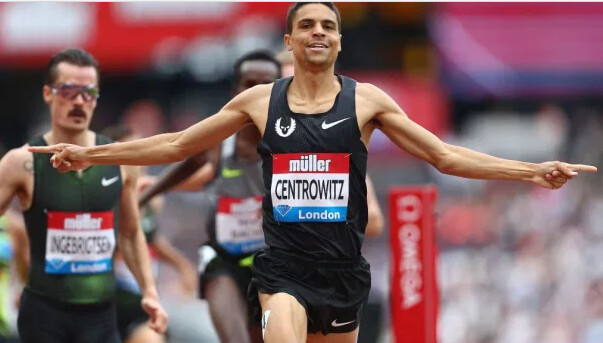
Two-time NCAA champion Weini Kelati and two-time U.S. champion Erika Kemp will headline the women’s field. They will be joined by Rio 2016 Olympic triathlon gold medalist Gwen Jorgensen, who won the Dash to the Finish Line 5K in 2014, and two-time Olympian and Team New Balance athlete Kim Conley.
“Winning the 10K for Women in Boston earlier this month gave me a huge confidence boost as I get ready for the Abbott Dash to the Finish Line 5K and USATF 5K Championships,” Kelati said. “That I broke Molly Huddle’s event record, who won the USA 5K Championships six times, makes me believe that I can compete against the very best and add my name to that list of national champions. I can’t wait to run my first New York City road race.”
Following in the footsteps of the professional athletes will be more than 7,000 runners participating in the Abbott Dash to the Finish Line 5K, including top local athletes and many runners participating in the marathon the following day.
Abbott, the title sponsor of the Abbott World Marathon Majors, will be the sponsor of the Abbott Dash to the Finish Line 5K for the fifth time. Abbott, a global healthcare company, helps people live fully with life-changing technology and celebrates what’s possible with good health.
The Abbott Dash to the Finish Line 5K annually provides TCS New York City Marathon supporters, friends and families the opportunity to join in on the thrill of marathon race week. The course begins on Manhattan’s east side by the United Nations, then takes runners along 42nd Street past historic Grand Central Terminal and up the world-famous Avenue of the Americas past Radio City Music Hall. It then passes through the rolling hills of Central Park before finishing at the iconic TCS New York City Marathon finish line.
The Abbott Dash to the Finish Line 5K and USATF 5K Championships will be broadcast live via USATF.TV. The broadcast is scheduled to begin at 8:20am ET with the first race starting at 8:30am ET.
About New York Road Runners (NYRR)
NYRR’s mission is to help and inspire people through running. Since 1958, New York Road Runners has grown from a local running club to the world’s premier community running organization. NYRR’s commitment to New York City’s five boroughs features races, virtual races, community events, free youth running initiatives and school programs, the NYRR RUNCENTER featuring the New Balance Run Hub, and training resources that provide hundreds of thousands of people each year with the motivation, know-how, and opportunity to Run for Life. NYRR’s premier event, and the largest marathon in the world, is the TCS New York City Marathon. Held annually on the first Sunday in November, the race features a wide population of runners, from the world’s top professional athletes to a vast range of competitive, recreational, and charity runners. To learn more, visit www.nyrr.org.
by Running USA
Login to leave a comment
Dash to the Finish Line
Be a part of the world-famous TCS New York City Marathon excitement, run through the streets of Manhattan, and finish at the famed Marathon finish line in Central Park—without running 26.2 miles! On TCS New York City Marathon Saturday, our NYRR Dash to the Finish Line 5K (3.1 miles) will take place for all runners who want to join in...
more...2016 Olympic gold medalist triathlon Gwen Jorgensen is Leaving Bowerman Track Club
After four years at the Nike-sponsored club coached by Jerry Schumacher, Gwen Jorgensen announced today that she’s leaving Bowerman Track Club to be coached by Bobby McGee, who she has worked with in the past.
In a video uploaded to her YouTube channel, Jorgensen explained that a mix of career and family goals led to this decision. “I’ve had two marathons that just haven’t proven I can do it,” she said. “I want to just have a marathon, that’s like, OK, I can run this.” She and her husband, Patrick Lemieux, are also looking for a new place to live and are considering having more children.
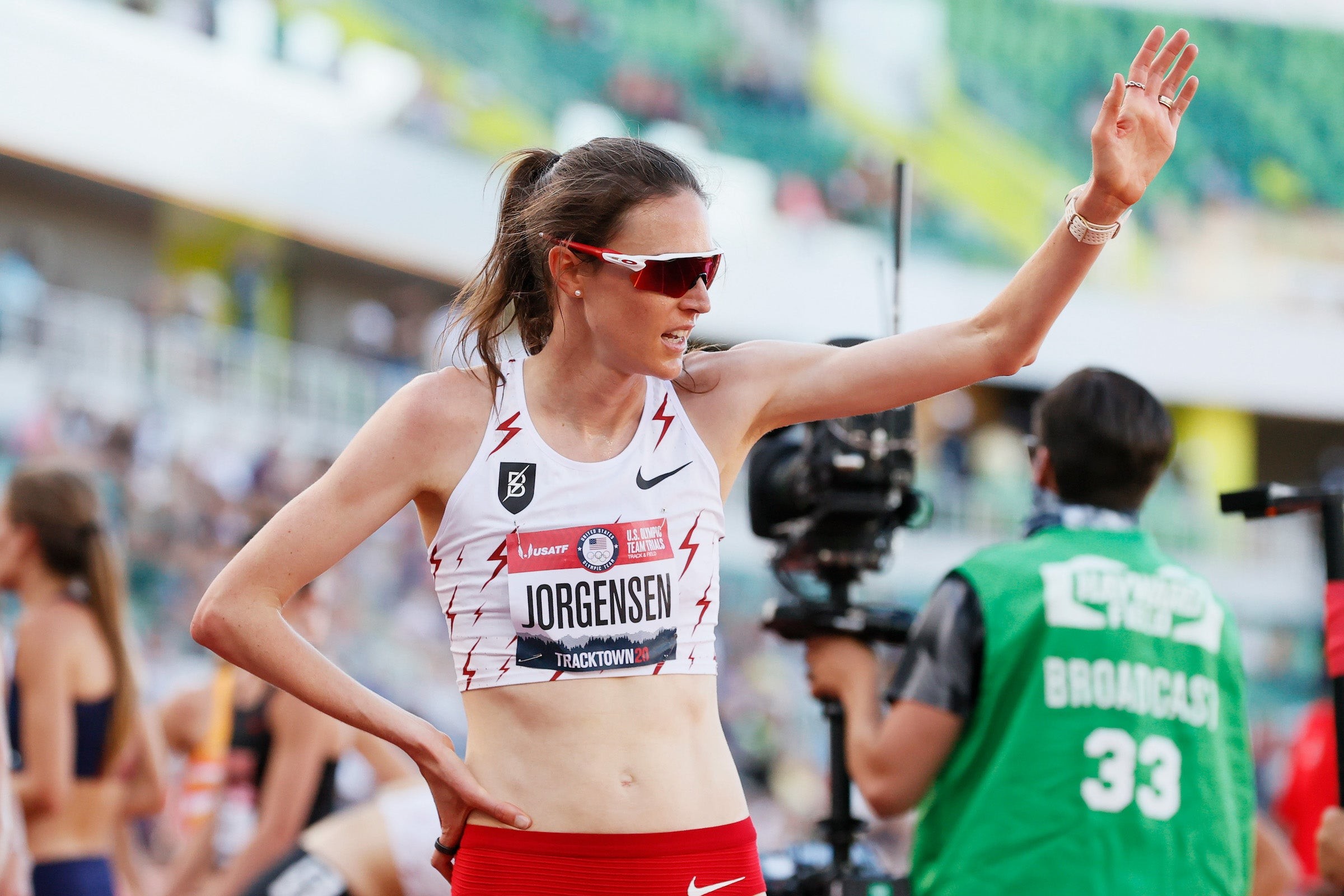
Jorgensen won the Olympic gold at the Rio Games in 2016 in triathlon, and announced a year later she would shift to running, with a focus on medaling in the marathon. Due to extended recovery after heel surgery to repair Haglund’s deformity in May 2019, she didn’t end up competing in the Olympic marathon trials last year—in early 2020, she decided to focus on the track.
“My goals in the marathon aren’t changing. My timeline is,” she said at the time.
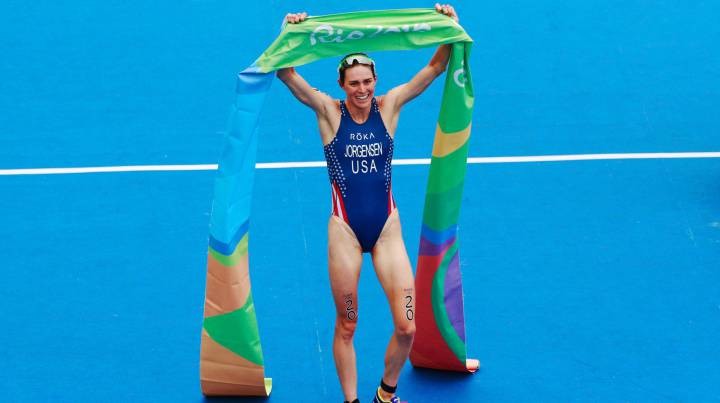
At the recent U.S. Olympic Track & Field Trials in Eugene, Oregon, Jorgensen competed in the final of the women’s 5,000m, finishing ninth in 15:50.62. (Two of her BTC teammates, Elise Cranny and Karissa Schweizer, finished first and second.) Jorgensen also lined up for the women’s 10,000m final, but pulled out sometime after recording a time of 26:50.07 at the 8000-meter mark.
“Today I had the best of intentions,” she wrote on Instagram following the race. “I got myself in good position the first mile (something I rarely do). I didn’t focus on splits, I just ran what I needed to stay in contention until I couldn’t.”
Searching for the Right Place to Live
Lemieux says that Bend, Oregon, Boulder, Colorado, and Bentonville, Arkansas are currently on their short list, and a visit to Asheville, North Carolina is next. “Really our criteria was: Can I mountain bike from the door? Can [Gwen] run outside 11, 11 and a half months of the year? And does it have good schools, and a family feel, and a small town vibe,” he says.
“We’re looking for a place that’s good for marathon training, but we also want this place to be somewhere where we could stay forever,” Jorgensen says.
Growing Their Family
At 35, Jorgensen is considering getting testing done to determine her “maternal age” and how many eggs she has left.
Jorgensen and Lemieux are parents to one son, Stanley. Jorgensen had a difficult labor experience that she says has made her reluctant to consider pregnancy again: “I also remember when I had Stanley and just saying, I can never come back to sport after this again. And just that I can never have more than one more child, just because of the experience I went through.” She mentioned that her pelvic floor therapist has told her her next experience will be great, but that they’re also open to adoption.
Goals for the Future
Unlike in the past, where Jorgensen publicly announced specific running goals for the future, she’s more broadly wanting to return to focus on the marathon. “Bobby was saying things that I just thought were outlandish, and I love that he has that belief in me,” she says. The couple admit that the decision on where to live is rushed, partly because Jorgensen wants to be settled for fall marathon training, though she didn’t specifically say which marathon she’s training for.
by Women´s Running
Login to leave a comment
Sara Hall and Sam Chelanga Take USA 10K Titles At the 52nd AJC Peachtree Road Race
Just after the sun rose in Atlanta on an unusually cool July morning, Sara Hall (Asics) and Sam Chelanga (U.S. Army) claimed the USA Track & Field 10-K road running titles at the 51st AJC Peachtree Road race in 31:41 and 28:43, respectively. Both athletes prevailed in late-race battles and each claimed $7,500 in prize money. The race was the third stop of the 2021 USATF Running Circuit.
The women started ahead of the men, and Hall was part of a 15-strong lead pack which quickly formed in the first kilometer. With her were other pre-race favorites, like Steph Bruce and Aliphine Tuliamuk (both of Hoka Northern Arizona Elite) and Gwen Jorgensen of the Nike Bowerman Track Club. But, there were also two less established runners in the lead group, Annie Frisbie and Emily Durgin (adidas).
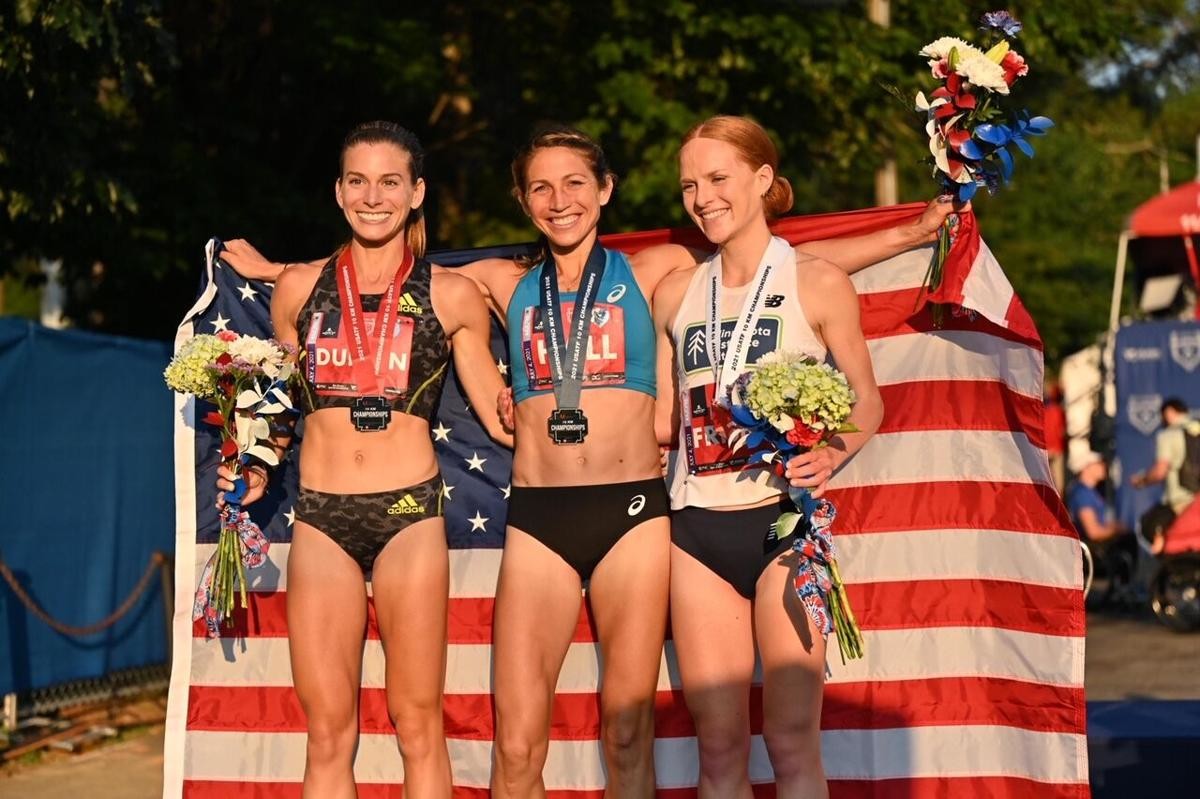
Durgin, 27, who finished ninth in the 10,000m at the USA Olympic Team Trials – Track & Field in Eugene, Ore., eight days ago, led the race through 5 kilometers in an honest 15:46. Hall remained with her as did Frisbie and Tuliamuk, but Bruce and Diane Nukuri (Asics) began to drift back. Durgin kept pressing, and 90 seconds later only Durgin, Hall and Frisbie remained in contention.
Hall, 38, who prior to today had won 10 national road running titles from the mile to the marathon, wasn’t surprised that it was Durgin who was pushing the pace. Both women live and train in Flagstaff, Ariz., and know each other well.
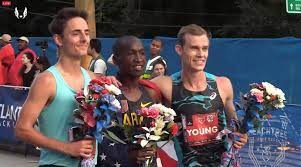
“She’s been running so strong this year,” Hall told Race Results Weekly by telephone. “At the Trials she had a great one. So, I didn’t really know who would be charging out there.”
At about the 7-kilometer mark Hall and Durgin increased the pace, and Frisbie (who is only 24) had to drop back. The two women spent most of the next three kilometers running side by side waiting for the right moment surge for the finish line. As she did at the Mastercard New York Mini 10-K on June 12, Hall finally showed her cards in the final 400 meters. She pulled away strongly from Durgin to win by eight seconds.
“That’s the first time I’ve kind of gone toe-to-toe with her in a race,” Hall said of Durgin. “She’s got a great future ahead of her. I’m excited to see what she does.” She added: “I’m really proud of her.”
Durgin set a personal best of 31:49, as did Frisbie in third (32:06). Nukuri rallied in the last two kilometers to finish fourth in 32:27, and Bruce (who won this race in 2018) got fifth in 32:35. Tuliamuk, the 2020 Olympic Trials Marathon winner, finished sixth in 32:43.
For Hall, today’s win lifted her spirits after she finished sixth at the Olympic Trials in the 10,000m, likely her final attempt at making an Olympic team on the track. She also felt like she got some payback for a bad race at the 2020 Olympic Trials Marathon, also held in Atlanta, where she was unable to finish.
“You know, I was wanting to kind of get through the hills,” Hall said of the middle portion of today’s race. “Obviously, these Atlanta hills crushed me in the Trials. So, I definitely wanted to have a strong run over those hills.” She continued: “Going into this race I just wanted to have fun out there… This was an opportunity for me to just to out there and enjoy racing.”
For Chelanga, today’s win was his first USA title since he won the 25-K crown in May, 2018, just before he said he was hanging up his racing flats.
“I had announced that I had retired after July 4th of 2018,” Chelanga said in his post-race television interview. “Then when I got back in the Army, people noticed in the physical test that I was really fast, and I ran the 10-miler for the Army team (October, 2019). So I did it. Long story, but now I’m back here.”
by LetsRun
Login to leave a comment
AJC Peachtree Road Race
The AJC Peachtree Road Race, organized by the Atlanta Track Club, is the largest 10K in the world. In its 48th running, the AJC Peachtree Road Race has become a Fourth of July tradition for thousands of people throughout the metro Atlanta area and beyond. Come kick off your Fourth of July festivities with us! If you did not get...
more...Elise Cranny Makes Her First Olympic Team, Wins 5,000 Meters
With a blistering last lap in 63.73 seconds, Elise Cranny of the Bowerman Track Club outkicked her teammate Karissa Schweizer and won the 5,000 meters in 15:27.81.
Schweizer was second in 15:28.11. Rachel Schneider, who trains in Flagstaff, Arizona, was third in 15:29.56. All three are making an Olympic team for the first time.
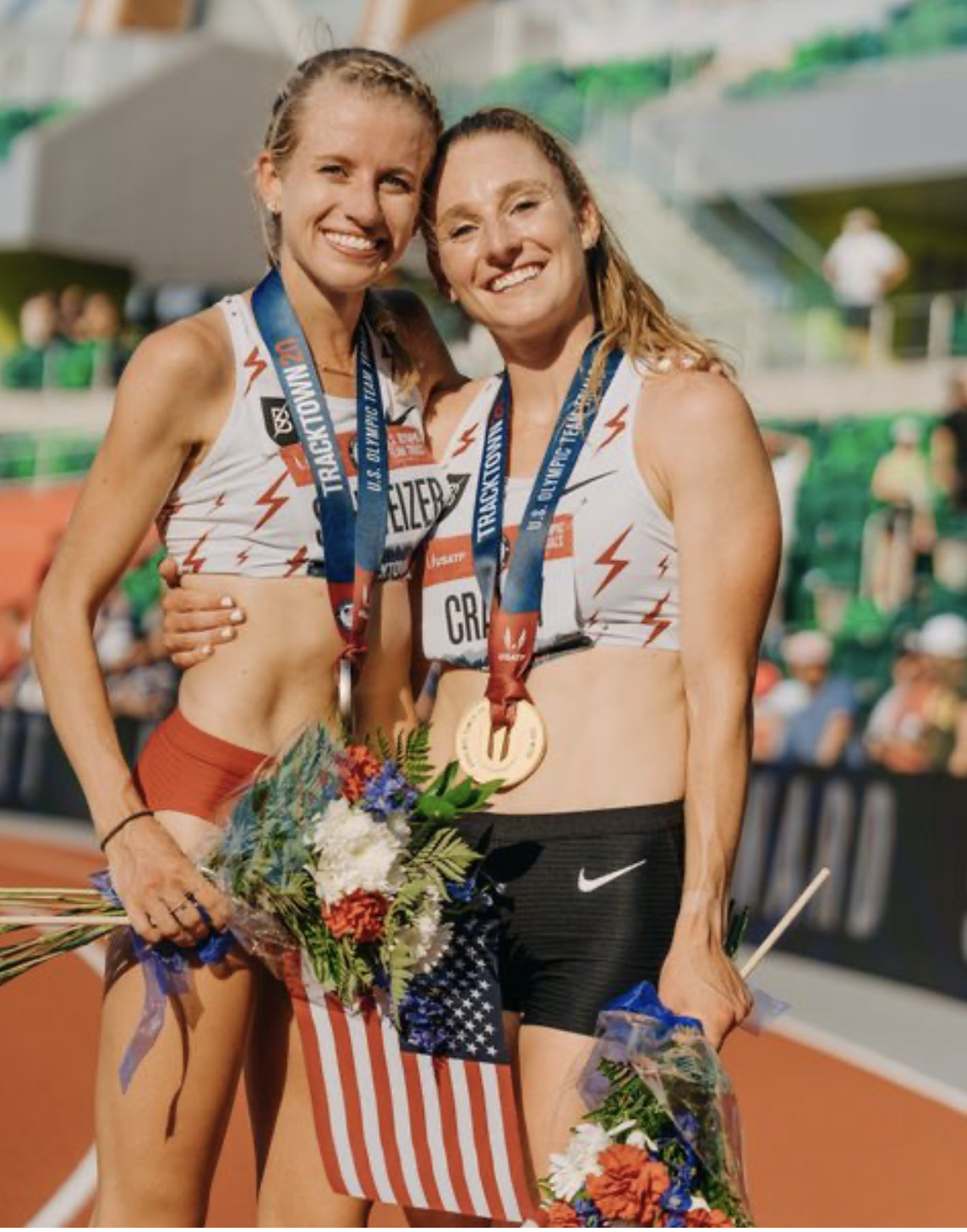
Abbey Cooper, who ran 15:07 in her preliminary heat on Friday, faster than the Olympic standard and her fastest time since 2015, finished fourth. She’ll be the Olympic alternate.
Given the warm weather in Eugene, Oregon—the temperature was 94 degrees—the race got off to a slow start. With a mile to go, the pace quickened considerably, shaking up the pack. With three laps remaining, the first four had separated themselves from the rest and there was no doubt the Olympic team would come from that group.
“It was pretty hot out there,” Cranny said. “It was a bit tactical and slow in the beginning.” The plan, she said, was to stay out of trouble and then “slowly squeeze it down.”
Schweizer’s take on the race plan: “With a mile to go, we were going to make it hurt,” she said.
Rachel Schneider looked around and realized four people were remaining and she had to beat only one of them. “We visualized this race quite a bit in a whole bunch of different scenarios,” she said. “I felt super confident I could go with whatever move, whenever it was made in the race.”
She downplayed the role of the weather: “It didn’t play a part at all,” she said. “Everyone is racing in the same conditions. During the warmup, I wore an ice vest. Outside of it, don’t worry about it.”
Cranny and Schweizer, who holds the American record in the 3,000 meters, are regular training partners of Shelby Houlihan. During 2020, Houlihan and Schweizer ran the two fastest American times ever for the 5,000 meters at an intrasquad race in Portland: Houlihan ran 14:23.92, the American record, and Schweizer ran 14:26.34.
On June 14, days before the start of the Trials, Houlihan announced she had tested positive for nandrolone, a banned substance, back in December. She subsequently appealed to the Court of Arbitration for Sport, which ruled against her. The ruling kept her out of the Olympic Trials.
Despite the distraction of the Houlihan test, the Bowerman Track Club has had a good meet so far. On the first night of competition, Woody Kincaid and Grant Fisher made the team in the men’s 10,000 meters.
Earlier in the day today, Sean McGorty, Cranny’s boyfriend, raced the preliminary heats of the men’s steeplechase. He had to stop midway through to adjust his shoes and fell into last place. But he made his way back up through the pack and was able to advance to the final on time.
Cranny, doing her warmup for the 5,000 meters, was too nervous to watch him race. At one point she looked out and saw him in last. Other teammates in the 5,000 meters, Gwen Jorgensen and Vanessa Fraser, came to tell her the good news when he had advanced to the final. Bowerman teammate Karissa Schweizer finished second, and Rachel Schneider was third.
by Runner’s World (Sarah Lorge Butler)
Login to leave a comment
The World athletics updates on new shoe rules
On Tuesday morning, World Athletics announced their amended shoe rules for the 2020-2021 competition season. The new rules were first announced in January when WA set boundaries on the two biggest issues in shoe technology: availability and shoe construction. The newest changes to the rules include a maximum height for spikes and the establishment of an ‘Athletic Shoe Availability Scheme’ for unsponsored elite athletes. The maximum stack height for road shoes of 40mm (which caused much controversy in January) remains the same.
WA says in their release, “The purpose of these amendments is to maintain the current technology status quo until the Olympic Games in Tokyo across all events until a newly formed Working Group on Athletic Shoes, which includes representatives from shoe manufacturers and the World Federation of the Sporting Goods Industry (WFSGI), have had the opportunity to set the parameters for achieving the right balance between innovation, competitive advantage and universality and availability.”
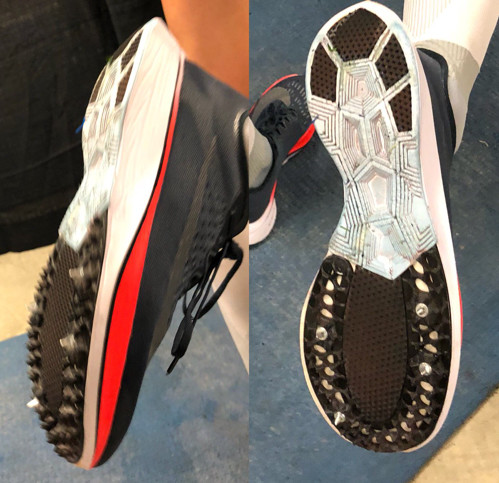
Running contracts, especially for Canadians, are hard to come by. Beyond getting paid to run, one of the perks of being contracted by a running company is the ability to wear prototype shoes before they hit the market. The Athletic Shoe Availability Scheme is working to eliminate the technological disadvantage that unsponsored athletes face when they’re not able to access the same gear as those they’re competing against. This rule is in line with the clause that WA has always had regarding shoes, stating that they need to be, “reasonably available to all athletes.”
WA will work to ensure that all elite runners have access to the same gear. While this is great in principle, the organization is not clear on their criteria for “elite” or who exactly will have access to this prototype pool.
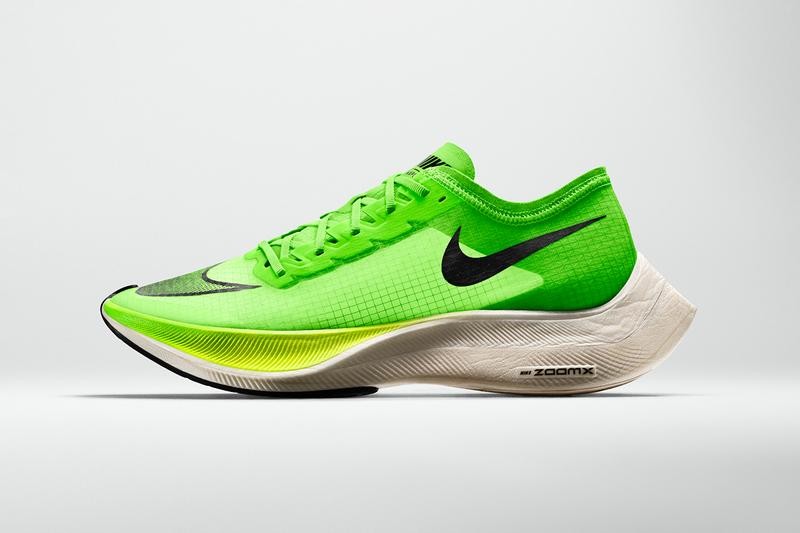
Track spikes have a maximum height now, too
The second change is that track spikes now have a ceiling when it comes to stack height. Previously unregulated, spikes now have to fall under a certain height, depending on a runner’s event. For sprint events, including hurdles and relays, the height is 20mm. For the 800m and up, it’s 25mm (this includes cross-country). The average pair of distance spikes on the market currently sits around a 15 mm stack height, so companies have some room to grow. However, the Nike spikes that Gwen Jorgensen wore at the 2018 USATF championships, for example, will now be illegal.
These rules are currently transitional and WA acknowledges that they have a long way to go. These temporary rules will be in place until after the 2021 Olympics when more permanent guidelines will be finalized.
by Madeleine Kelly
Login to leave a comment
World bronze medalist Moh Ahmed and US champion Shelby Houlihan smash North American 5000m records in Portland
World bronze medallist Moh Ahmed and US champion Shelby Houlihan made significant improvements on the North American 5000m records at a low-key competition at Jesuit High School in Portland on Friday night (10).
Ahmed’s 12:47.20 took more than six seconds off Bernard Lagat’s continental record set back in 2011, while Houlihan’s 14:23.92 was a 10.53-second improvement on her own North American record from two years ago. Runner-up Karissa Schweizer also finished inside the previous continental record, clocking 14:26.34.
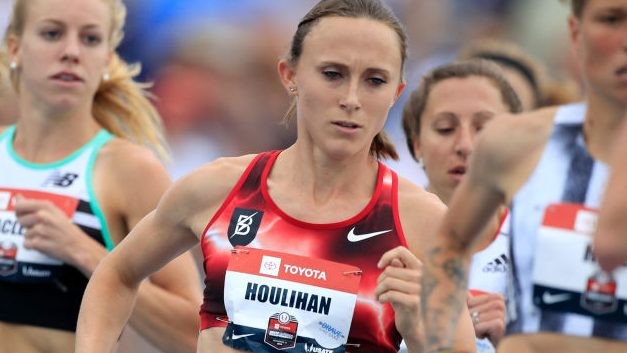
Organised by their training group, the Bowerman Track Club, the meet comprised just two 5000m races and the intention for both events was to provide the opportunity for fast times. Steeplechase specialist Colleen Quigley paced the early stages of the women’s race, taking the field through the first 1000m in 2:55.44.
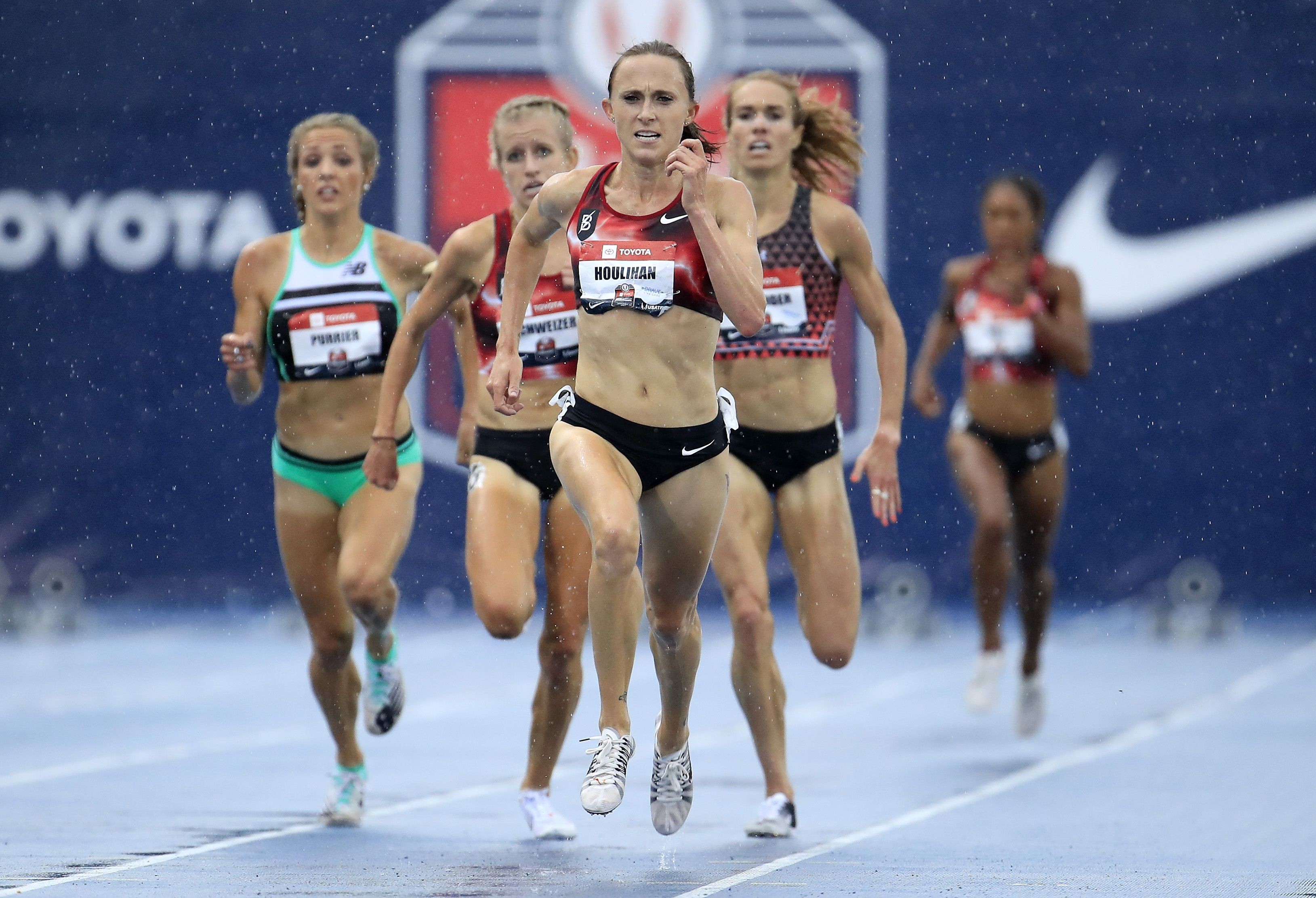
Fellow steeplechaser Courtney Frerichs, the 2017 world silver medallist, took up the running just before 2000m, which was passed in 5:51. Three women – Quigley, Marielle Hall and Gwen Jorgensen – withdrew at the 3000m point. Elise Cranny briefly led at that point, clocking 8:47.88 for her 3000m split, and was just ahead of Houlihan, but Cranny and Frerichs eased off for the final stages of the race, leaving just Houlihan and Schweizer out in front.
Houlihan drifted to the front with three laps to go and gradually started to increase the pace for the final kilometre. Schweizer managed to stick with her training partner until the final lap, which Houlihan covered in 61.4 seconds, giving her a finishing time of 14:23.92. Schweizer was second in 14:26.34.
“I knew Karissa was going to try to come up on me and take the lead, but I decided I was not going to let that happen,” Houlihan told usatf.tv after the race. “I just kept trying to fight her off and tried to have a big kick on the last lap.
“Karissa was in the race in Heusden two years ago where I set the previous record,” added Houlihan. “It’s been really awesome to have her as a training partner and to see how far she has come. She was only three seconds behind me today and I know she’s going to get that 5000m record at some point.”
The men’s race played out in similar fashion, with half the field helping to set the pace for the first 3000m before leaving Ahmed and Lopez Lomong to battle it out for victory.
Ryan Hill (2:36.2) and Grant Fisher (5:12) were the respective leaders for the first and second kilometres as Ahmed and Lomong sat in the middle of the pack. Fisher reached 3000m in 7:46.10, closely followed by Evan Jager and Sean McGorty, but they soon stepped off the track and Ahmed took up the running with three laps to go.
Ahmed then started to wind up the pace and broke away from Lomong on the penultimate lap, which he covered in 59.5. He moved up another gear and ran the final 400m in 57.45 to cross the finish line in 12:47.20, smashing his own Canadian record and moving to 10th on the world all-time list. Lomong, who narrowly missed out on breaking the 13-minute barrier last year with 13:00.13, finished second in a lifetime best of 12:58.78.
“Once I saw the way Shelby and Karissa attacked the last 600m, I told myself that I just had to do the same kind of thing,” said Ahmed, whose previous best was 12:58.16. “With two laps to go, the clock said 10:49 and I just thought, ‘you can run two (minutes) flat (for the final 800m)’. With 200m to go, I just tried to blast it as hard as I could.
“I’m excited, it’s something I’ve been working really, really hard for. It’s been an extremely challenging year, but luckily we have a good group and it was great to deliver this.”
by World Athletics
Login to leave a comment
Ahmed, Quigley and others post PBs at Bowerman Track Club meet
The intra-squad meet saw huge personal bests from a number of athletes
Restrictions regarding social distancing and COVID-19 have been getting more relaxed in the U.S. lately, and that has allowed for clubs to hold in-person track meets and competitions. On Tuesday night, the Bowerman Track Club joined other high-profile and elite training groups which have held competitions in the past month, such as the Oregon and Atlanta track clubs, which held a dual meet a couple of weeks ago, and Team Boss in Colorado, which ran a record-breaking intra-squad mile event on June 27. The Bowerman event featured 1,500m and 5,000m races for both the men and women, and it saw some seriously fast times, with multiple athletes not just beating their PBs, but absolutely smashing them.
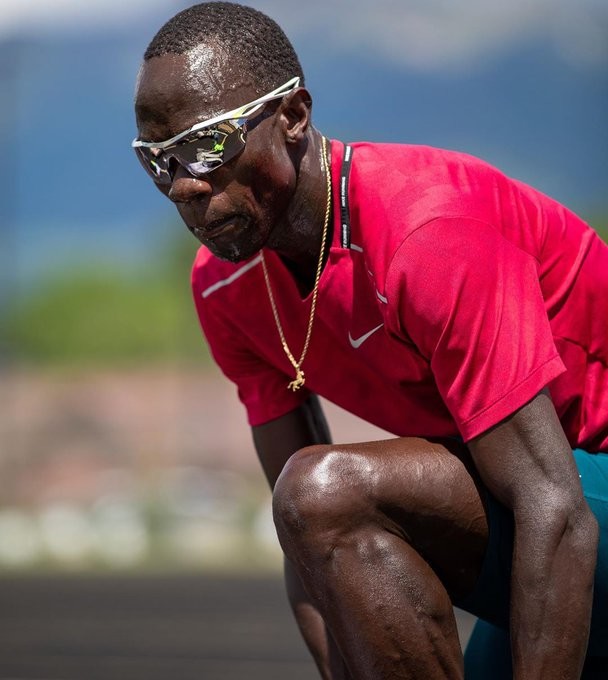
PBs for everyone
The women’s 5,000m saw seven athletes line up to race, and the top four walked away with new PBs. Elise Cranny won the race in 14:48.02, which was a more than 30-second improvement on her PB of 15:25.66. It was also good enough to make her the seventh-fastest American woman ever over 5,000m. Second place was Courtney Frerichs, who entered Tuesday night with an indoor PB of 15:02.91 but an outdoor best of 16:22.98 from 2013. She smashed both of those times, running 14:50.06, which catapults her to eighth on the all-time list of American women.
Colleen Quigley finished in third place, and although the 5,000m isn’t her specialty, she still dropped a blazing fast time of 15:10.42, which was 48 seconds faster than her previous best of 15:58.90. Finally, in fourth place was Gwen Jorgensen, who beat her outdoor PB with a time of 15:18.25 (although she has a faster indoor PB of 15:02.27).
On the men’s side, Sean McGorty won ahead of Grant Fisher, both of whom beat their 5,000m PBs with times of 13:11.22 and 13:11.68, respectively. McGorty’s previous best was 13:21.35 and Fisher’s was 13:29.03.
1,500m runs
The 1,500m events had fewer participants, but both races saw a PB each. The men’s run had a thrilling sprint finish between Josh Thompson, Lopez Lomong and Canadian Mohammed Ahmed. Thompson ran 3:39.652 to edge out Lomong, who ran 3:39.660, and Ahmed, who posted a PB of 3:39.84. The women’s race also saw a tight finish, with Shelby Houlihan eking out a win in 4:02.37 over Karissa Schweizer, who ran a four-second PB with a time of 4:02.81.
Official races may still be on hold, but the Bowerman athletes have sent a message to the rest of the track world, showing everyone that they’ll be fit, fast and ready to race whenever the season resumes.
by Running Magazine
Login to leave a comment
Olympic triathlon gold medalist Gwen Jorgensen runs first race since 2018
Gwen Jorgensen ran her first race since 2018 on Friday evening at the Dempsey Indoor Facility in Seattle, Washington. She finished in 15:47.20 for sixth place in the 5,000m.
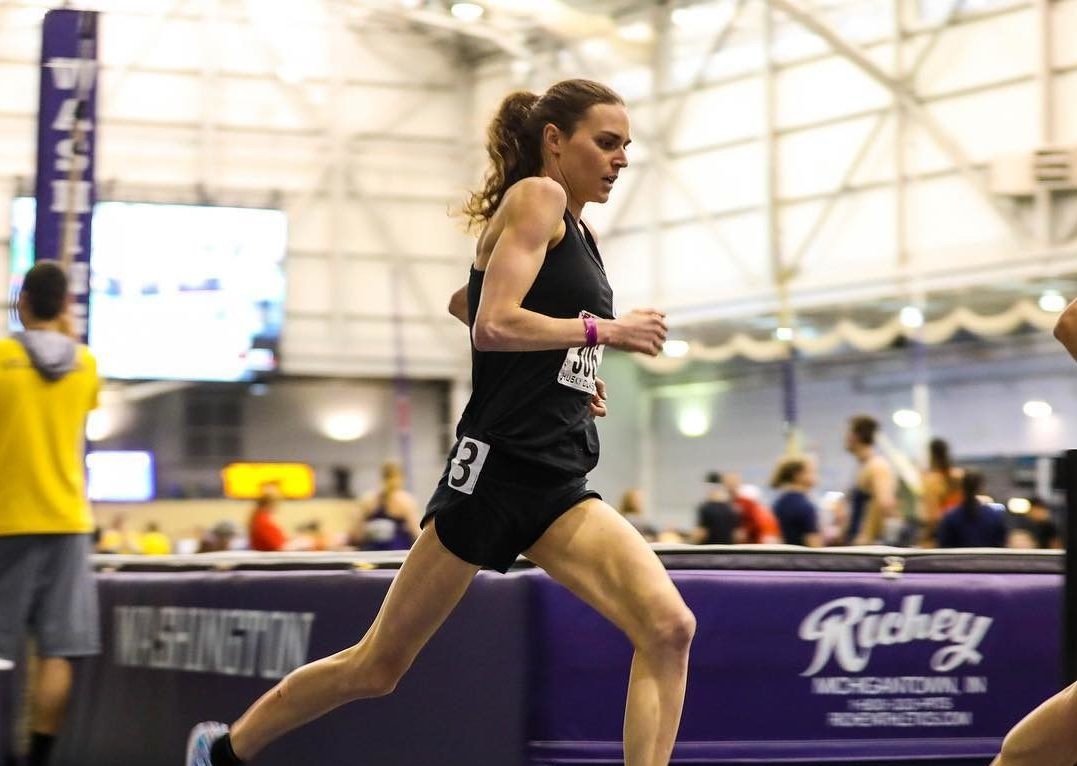
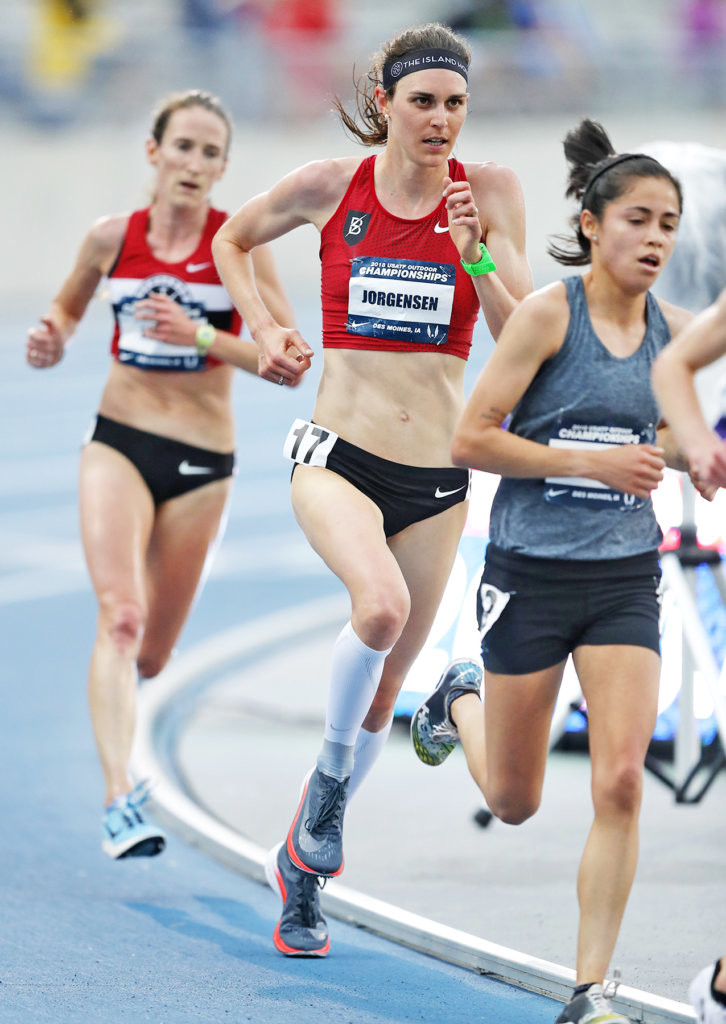
The last time the 2016 Olympic gold medallist toed the line was in 2018 at the Chicago Marathon. That was the runners first real crack at the 42.2K distance (when it wasn’t within a triathlon or run on a whim). Jorgensen ran a 2:36:23, which for her was a disappointing result.
She had announced in a YouTube video in December she had decided to try to qualify for the 10,000m and possibly the 5,000m on the track for the upcoming Tokyo Olympics, since her extended recovery from heel surgery has temporarily derailed her marathon plans. It was only in the fall of 2019 that Jorgensen was able to resume a full training load.
Jorgensen’s time from Friday is a good start to her season, but still a long way from the Olympic 5,000m standard of 15:10.00. Canadian Regan Yee won Friday’s race in a new indoor personal best of 15:33.17 which is only a second and a half behind her outdoor personal best of 15:31.62. Yee represented Canada in the 3,000m steeplechase at the 2019 World Championships.
by Madeleine Kelly
Login to leave a comment
Gwen Jorgensen announces move to track for 2020
The 2020 US. Olympic Marathon Trials on Feb. 29 were marked on Gwen Jorgensen’s calendar since her Nov. 2017 announcement that she was leaving the triathlon to pursue running full time in hopes of winning the 2020 Olympic gold medal in the marathon.
But now, less than three months out from the event, Jorgensen announced that she will not run the U.S. Olympic Marathon Trials and instead focus on making the U.S. team for the Summer Games on the track in the 10,000 meters.
“It’s a multitude of emotions,” Jorgensen, 33, says. “I’m disappointed. At the same time, I’m also excited. I’m at a point where I’m running 70 miles per week and training is going well. I just know that if I went to the trials, running 70 miles per week, I’d be hoping that I made a team. That’s not what I want to do at an Olympic Trials.
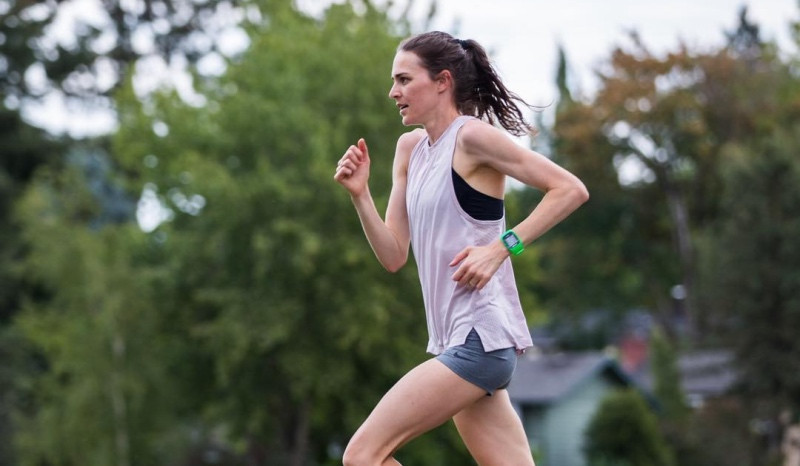
I want to go in confident and knowing that I have the ability to make a team. My goals in the marathon aren’t changing. My timeline is.”
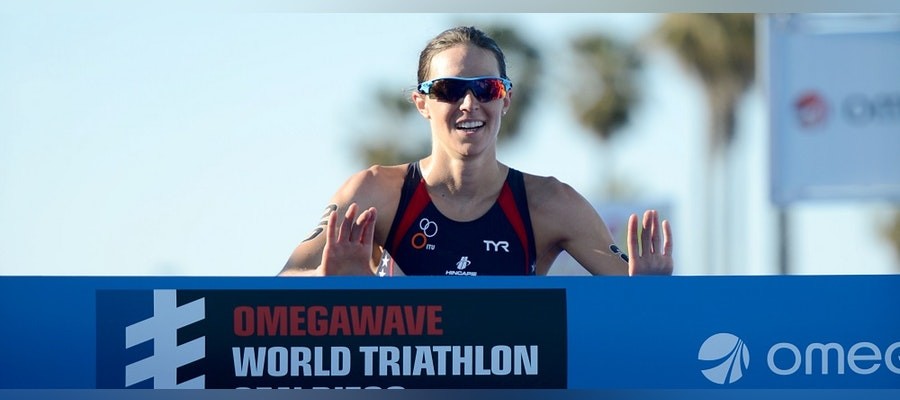
Heel surgery forced Jorgensen, who converted to distance running after winning the Rio Olympic triathlon, to pass up the Feb. 29 U.S. Olympic Marathon Trials and focus on the track and field trials in June in the 10,000m and, probably, the 5000m.
She made the decision after recent talks with her coach, Jerry Schumacher, following a difficult recovery from late May surgery to correct Haglund’s deformity.
“I could get bent out of shape and sad about it, but at the end of the day, I’m excited because I know this path that I’m on will not only be a successful route, but I also think it will lead to success long term in the marathon," she says. "I’m confident in my abilities on the track."
Jorgensen’s goal was a lofty one from the onset. No American woman has won gold in the marathon at the Olympics since Joan Benoit Samuelson’s victory in the 1984 inaugural running. The 2020 trials, where the top three finishers qualify for Tokyo, are shaping up to be one of the most competitive races of the year, as American women’s distance running is at its highest level with recent World Marathon Major victories by Shalane Flanagan at the 2017 New York City Marathon and Desiree Linden at the 2018 Boston Marathon.
Even after giving birth to her son Stanley in Aug. 2017, Jorgensen could have returned to the triathlon and arguably been a contender to become the first woman to win back-to-back Olympic gold medals. But she and her family decided to move to Portland, Ore., and once settled there, Jorgensen signed a professional running contract with Nike and joined the Bowerman Track Club.
Jorgensen worked her way to the marathon by racing on the track in the spring of 2018 and ran a few U.S.A. Track and Field road race championships. She says her training went well, nailing all but one workout in 12 weeks. But in the three days before she was set to compete in the Chicago Marathon, Jorgesen battled a fever and underestimated the effects of running while sick. She finished in a disappointing 2:36:23 in her professional marathon debut.
Now fully healed, healthy and recovered, Jorgensen is working her way back to train with her Bowerman teammates. Her day sometimes includes a hill sprints, a track workout, pelvic floor therapist treatment, physical therapy exercises for her achilles and then an evening workout before returning to her family.
“I think it’s important not to be afraid when you need to admit that your goal needs to change,” Jorgensen says. “I’m not going to say that I’m failing because I still want to have my marathon goals, but the timeline has changed. It’s still important to have big goals and to share those goals. It holds everyone accountable.”
by Chris Cahvez
Login to leave a comment
2028 US Olympic Trials Marathon
Most countries around the world use a selection committee to choose their Olympic Team Members, but not the USA. Prior to 1968, a series of races were used to select the USA Olympic Marathon team, but beginning in 1968 the format was changed to a single race on a single day with the top three finishers selected to be part...
more...Shalane Flanagan has announced her retiring from professional running
With happy tears I announce today that I am retiring from professional running. From 2004 to 2019 I’ve given everything that’s within me to this sport and wow it’s been an incredible ride! I’ve broken bones, torn tendons, and lost too many toenails to count. I've experienced otherworldly highs and abysmal lows. I've loved (and learned from) it all.
Over the last 15 years I found out what I was capable of, and it was more than I ever dreamed possible. Now that all is said and done, I am most proud of the consistently high level of running I produced year after year. No matter what I accomplished the year before, it never got any easier. Each season, each race was hard, so hard. But this I know to be true: hard things are wonderful, beautiful, and give meaning to life. I’ve loved having an intense sense of purpose. For 15 years I've woken up every day knowing I was exactly where I needed to be.
The feeling of pressing the threshold of my mental and physical limits has been bliss. I've gone to bed with a giant tired smile on my face and woken up with the same smile. My obsession to put one foot in front of the other, as quickly as I can, has given me so much joy.
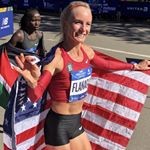
However, I have felt my North Star shifting, my passion and purpose is no longer about MY running; it's more and more about those around me. All I’ve ever known, in my approach to anything, is going ALL IN.
So I’m carrying this to coaching. I want to be consumed with serving others the way I have been consumed with being the best athlete I can be.
I am privileged to announce I am now a professional coach of the Nike Bowerman Track Club. This amazing opportunity in front of me, to give back to the sport, that gave me so much, is not lost on me. I’ve pinched myself numerous times to make sure this is real. I am well aware that retirement for professional athletes can be an extremely hard transition. I am lucky, as I know already, that coaching will bring me as much joy and heartache that my own running career gave me.
I believe we are meant to inspire one another, we are meant to learn from one another. Sharing everything I’ve learned about and from running is what I’m meant to do now.I would like to thank: The 5 coaches who guided me throughout my career, Michael Whittlesey and Dennis Craddock (2004-2005), John Cook (2006-2008), Jerry Schumacher (2009-2019), and Pascal Dobert (2009-2019). Each man was instrumental in developing me into the best version of myself.
Jerry, Pascal and I will continue to work together in this next chapter and I couldn’t be more grateful.
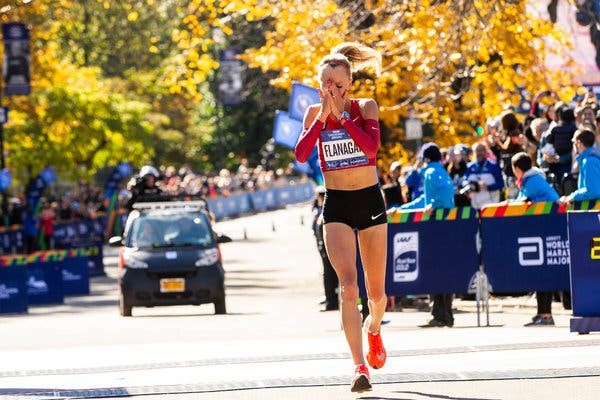
Jerry has been my life coach, running coach and now will mentor me towards my next goal of becoming a world-class coach myself. I’m thankful for his unending belief in me.
My family and husband who have traveled the world supporting my running and understanding the sacrifices I needed to make. Their unconditional love is what fueled my training.My longtime friend, Elyse Kopecky who taught me to love cooking and indulge in nourishing food. Run Fast. Eat Slow. has been a gift to my running and to the thousands of athletes.
My teammates, and all the women I've trained with, for pushing me daily, and the endless smiles and miles. They include: Erin Donahue, Shannon Rowbury, Kara Goucher, Lisa Uhl, Emily Infeld, Amy Cragg, Colleen Quigley, Courtney Frerichs, Shelby Houlihan, Betsy Saina, Marielle Hall, Gwen Jorgensen, Kate Grace.
My sponsor Nike for believing in me since 2004 and for continuing to support my new dream as a professional coach. I hope I made myself a better person by running. I hope I made those around me better. I hope I made my competition better. I hope I left the sport better because I was a part of it.
My personal motto through out my career has been to make decisions that leave me with “no regrets”.....but to be honest, I have one. I regret I can’t do it all over again.
by Shalane Flanagan
Login to leave a comment
TCS New York City Marathon
The first New York City Marathon, organized in 1970 by Fred Lebow and Vince Chiappetta, was held entirely in Central Park. Of 127 entrants, only 55 men finished; the sole female entrant dropped out due to illness. Winners were given inexpensive wristwatches and recycled baseball and bowling trophies. The entry fee was $1 and the total event budget...
more...Gwen Jorgensen has set her sights on winning the gold medal in the marathon at the 2020 Olympic Games in Tokyo
Gwen Jorgensen knows how to attack a challenge.
The 33-year-old Waukesha native has set her sights on winning the gold medal in the marathon at the 2020 Olympic Games in Tokyo. She wanted a new goal after winning the triathlon at the 2016 Rio Games.
No American woman has claimed Olympic gold in the marathon since Joan Benoit Samuelson in 1984. Jorgensen is trying to do it two years after giving birth to her son and while dealing with a recent injury setback.
"It’s been an uphill battle, I’d say," Jorgensen said. "But one that I like. One of the reasons I switched sports, I wanted that challenge. I wanted something that keeps me motivated."
She had been bothered by pain in her right foot, especially after finishing 11th in the 2018 Chicago Marathon. Jorgensen was diagnosed with Haglund’s deformity.
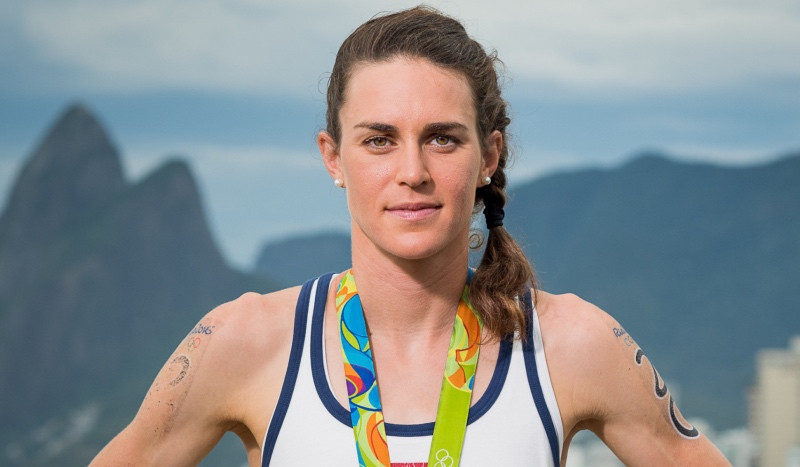
"It's basically a bone overgrowth in the heel," she said. "And then every time you take a step, the Achilles and the bursas and everything rub against the bone overgrowth. And it causes pain. It causes damages to those things."
Just putting on socks was excruciating. Jorgensen did everything to avoid surgery, including platelet-rich-plasma therapy, cortisone shots and changing her running form. But she finally went under the knife in May.
“For me that pain is gone, which is so good," Jorgensen said.
It's been a slow and steady comeback since then.
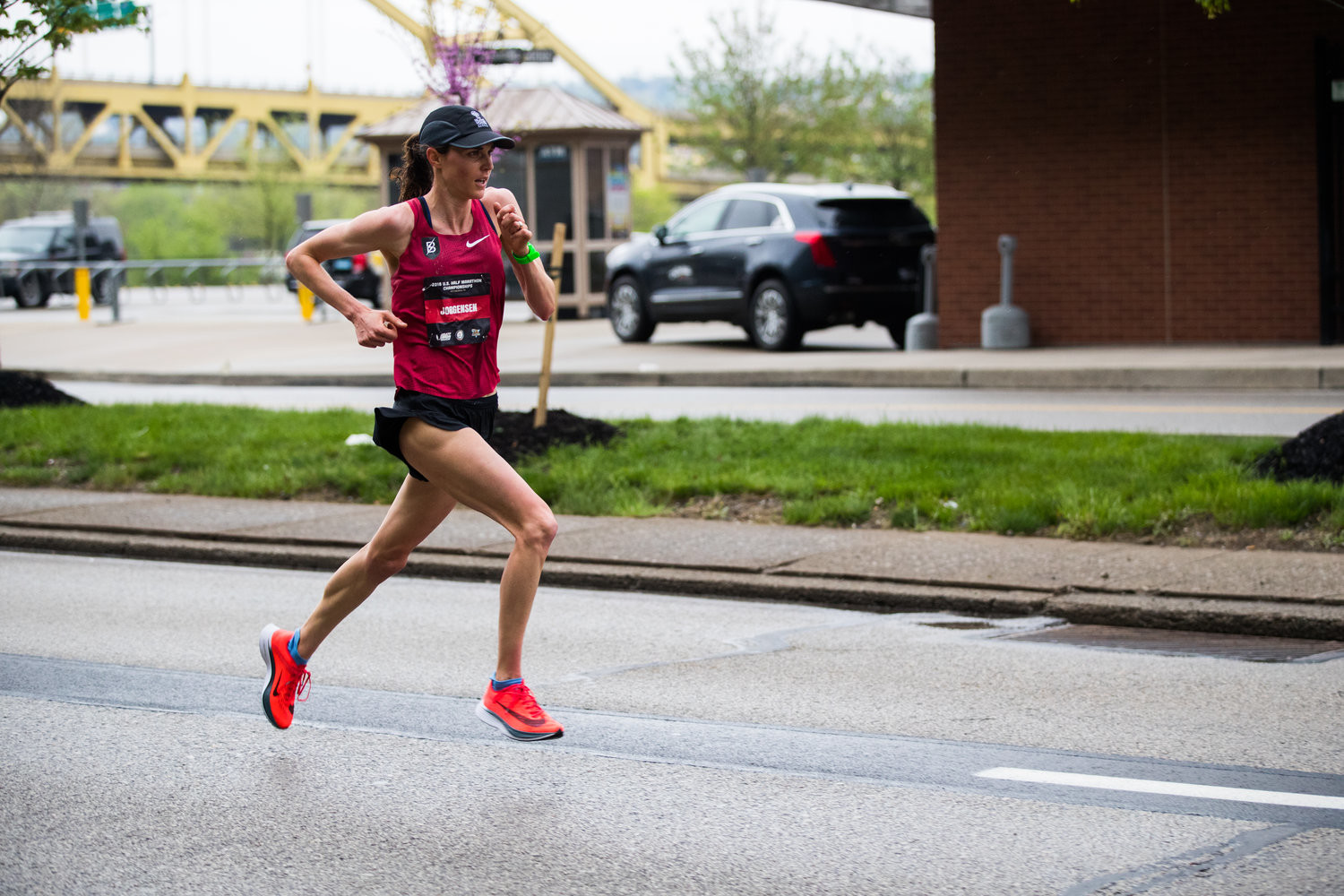
"I’ve been able to run a little bit now," Jorgensen said. "I would love to increase a ton but I’ve put a lot of time and energy into getting healthy and that’s my main goal right now."
She has gotten up to running 40 minutes every other day.
“That probably sounds like a lot for a lot of people," Jorgensen said. "But I’m used to an hour-and-a-half in the morning and an hour at night."
by Ben Steele
Login to leave a comment
Tokyo 2020 Olympic Games
Fifty-six years after having organized the Olympic Games, the Japanese capital will be hosting a Summer edition for the second time, originally scheduled from July 24 to August 9, 2020, the games were postponed due to coronavirus outbreak, the postponed Tokyo Olympics will be held from July 23 to August 8 in 2021, according to the International Olympic Committee decision. ...
more...Gwen Jorgensen had undergone surgery to correct a foot issue called Haglund’s deformity
On May 17, American triathlete-turned-marathoner Gwen Jorgensen of Portland, Oregon had surgery in Colorado to repair a Haglund’s Deformity, a bony growth on the back of the heel (where the Achilles tendon attaches) that causes pain. Jorgensen expects to be out of training for three to four months as she recovers.
This is the same surgery Galen Rupp had in October, though as Jonathan Gault reports, his operation was a bit trickier since the surgeon had to detach and re-attach his Achilles tendon, where that was not necessary in Jorgensen’s case.
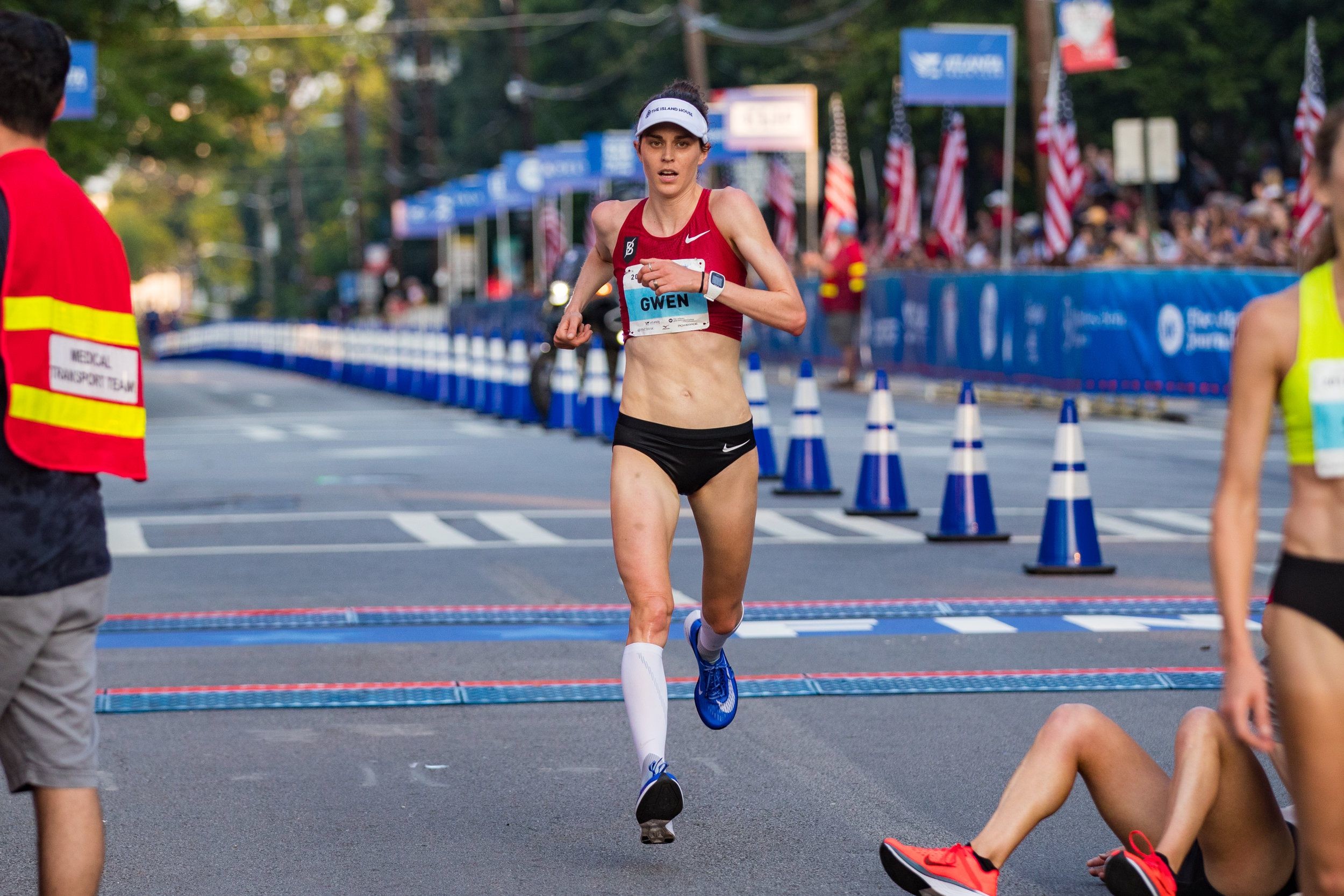
Jorgensen reports she has been dealing with pain from the injury for some time. She tried PRP (platelet-rich plasma) injections and cortisone shots, but was never pain-free for long, and the decision was made to have the surgery.
The injury has been linked to wearing high heels (not likely a factor in Jorgensen’s case) but is generally termed idiopathic, meaning it can crop up in anyone without any obvious cause.
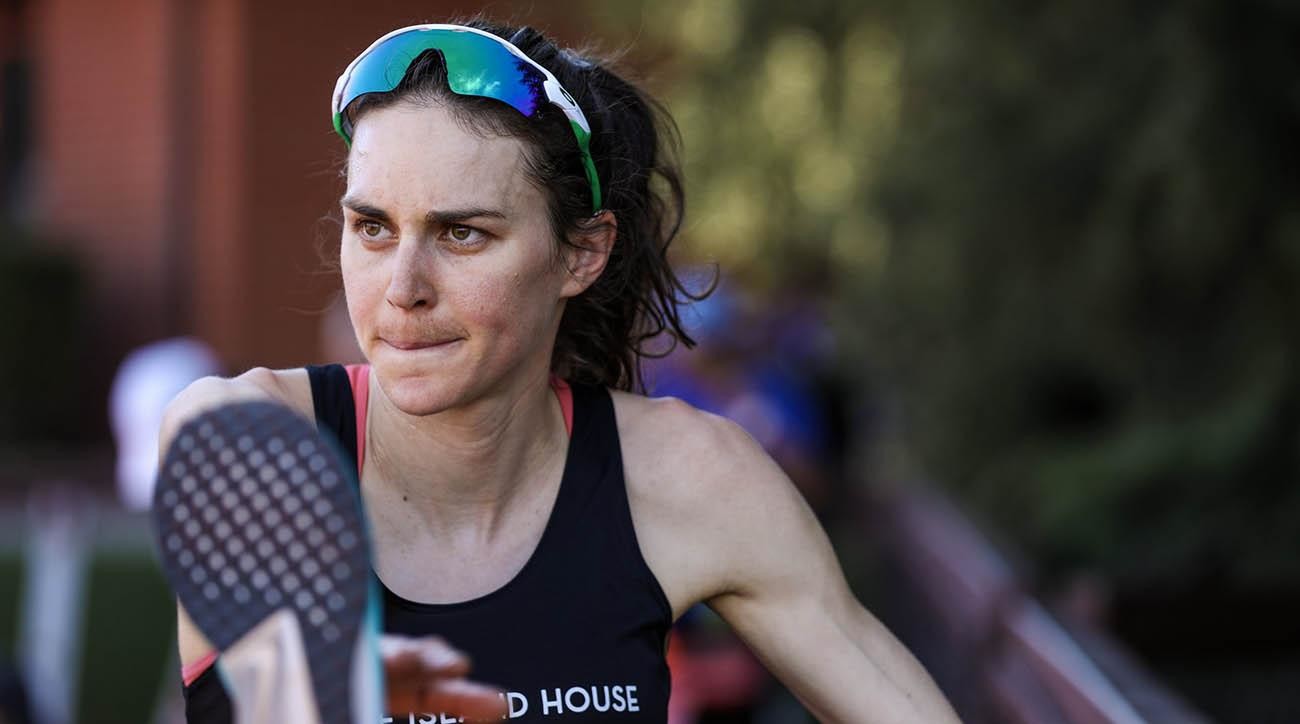
Jorgensen reports that this is the first chronic injury she has had to deal with in her careers as a triathlete and runner. (Jorgensen won gold in the 2016 Olympic triathlon, and ran her professional marathon debut at Chicagolast October, where she finished in 11th place in 2:36.)
She is in a cast and walking with crutches for the first two weeks, and will not be able to run for about six weeks. The timeline for recovery is likely three to four months, but Jorgensen says she’s prepared to take it as it comes and does not have any races on her schedule. “The number-one goal is to be healthy,” she says.
“The one major reason I did this surgery was so I could accomplish my goals, and I need to be healthy in order to do that.”
Gwen Jorgensen, Galen Rupp
Login to leave a comment
Everything you need to know about the 2018 Chicago Marathon
The Bank of America Chicago Marathon is happening this Sunday October 8...Galen Rupp who lives in Oregon won the 2017 race clocking 2:09:20, will return to battle four-time Olympic gold medalist Mo Farah of Great Britain.
The two have raced against each other 22 times, with Farah winning 21 times...Mo Farah has been training over 120 miles per week and has only one thing on his mind, to win...There are five men in the field with faster personal records than Rupp, who clocked his 2:06:07 PR winning the Prague Marathon on May 6... among the other elite men in the field include two-time world champion Abel Kirui, Geoffrey Kirui, reigning world champion and 2017 Boston Marathon winner, and four-time Olympic gold medalist Mo Farah, Rupp's former training partner...Plus Mosinet Geremew (2:04:00 personal best) and Birhanu Legese (2:04:15), both of Ethiopia, also lead the international field...
In the field of approximately 45,000 runners Sunday, 47 percent will be women...The top American women include Laura Thweatt, Sarah Crouch, Taylor Ward, Katie Matthews and Gwen Jorgensen leading the pack.
Joan Benoit Samuelson, 61, who won the 1984 Olympics gold medal and Chicago in 1985, also will be running, and her goal is to break three hours. No woman over 60 has ever run that fast...
Top elite women include Roza Dereje and Birhane Dibaba of Ethiopia; Brigid Kosgei of Kenya; and fellow Kenyan and two-time champion Florence Kiplagat...
Chicago is one of the flattest and fastest marathons in the world. The only thing that gets in the way of more fast times is sometimes hot weather...The weather forecast for this year is 60 degrees with humidity at 75%. Not ideal but it has been worse...
Four world marathon records have been set in Chicago. Dennis Kimetto of Kenya holds the Chicago Marathon men’s record with a time of 2:03:45 set in 2013. Paula Radcliffe of Great Britain set the women’s record in 2002 with a time of 2:17:18...
Yuki Kawauchi, from Japan, holds a record for running 79 marathons in less than 2:20. In April, he won the Boston Marathon in 2:15:58. He has won 30 marathons in his career with a personal best of 2:08:14. He has competed in 20 marathons so far in 2018 and is running...
The female and male Chicago winners each get $100,000. The total purse distributed among all the money winners is $803,500. There are bonuses for course records: $75,000 for men and women...
Twenty-three percent of the field are from outside the US. The largest group is from Mexico, with 2,225 runners. Then: Canada (1,777), United Kingdom (1,741), China (1,347), Brazil (1,209), Germany (566), Hong Kong (481), Costa Rica (471) and Italy (453)...
Rupp's 2017 victory was his first in a marathon major. He said it compares to his two Olympic medals, silver in the 10,000 meters in 2012, and marathon bronze in 2016. "Nothing can really replace the Olympics," he told Oregon Live. "But winning a major in Chicago, a city I love, was right up there."...
Rupp said he is fully recovered from nagging Achilles and ankle problems that complicated his buildup. "I'm feeling good," he said. "I've been healthy the last five or six weeks."...Rupp's father grew up in Maywood, Illinois and Galen spent a lot of time in the Chicago area during his childhood.
"I'm so excited to be returning to Chicago to defend my title," Rupp said. "I couldn't be more thrilled to be heading back to the Windy City." First wave start time is 7:30am Central Time on Sunday.
by Bob Anderson
Login to leave a comment
Strong elite women´s field is set to run the Chicago Marathon this weekend
Login to leave a comment
Gwen Jorgensen added to the 2018 Chicago Marathon field
Login to leave a comment
Olympic Triathon gold medalist, Gwen Jorgensen is set to race the AJC Peachtree Road Race
Login to leave a comment
Olympic Triathlon Gold Medalist disappointed with her 4th Place at USATF Half
by Dan Empfield/ Slowtwitch.com
Login to leave a comment
Olympic Triathlon Gold Medalist Gwen Jorgensen is making her half-marathon debut May 6
Login to leave a comment
Olympic Triathlon Gold Medallist is pursuing gold in the marathon in 2020
People
Login to leave a comment


